I don’t recall my first visit to Coastal Mississippi, but I was told our family went there when I was very young. Over the years, my parents would mention various details about the area, always with much enthusiasm. Time went by, my parents passed away, and while cleaning out our family home, I found a Biloxi beach lighthouse magnet tucked away in a box. I saw it as a message for me to return to this destination, and though it has taken a while, I finally made the trip reality.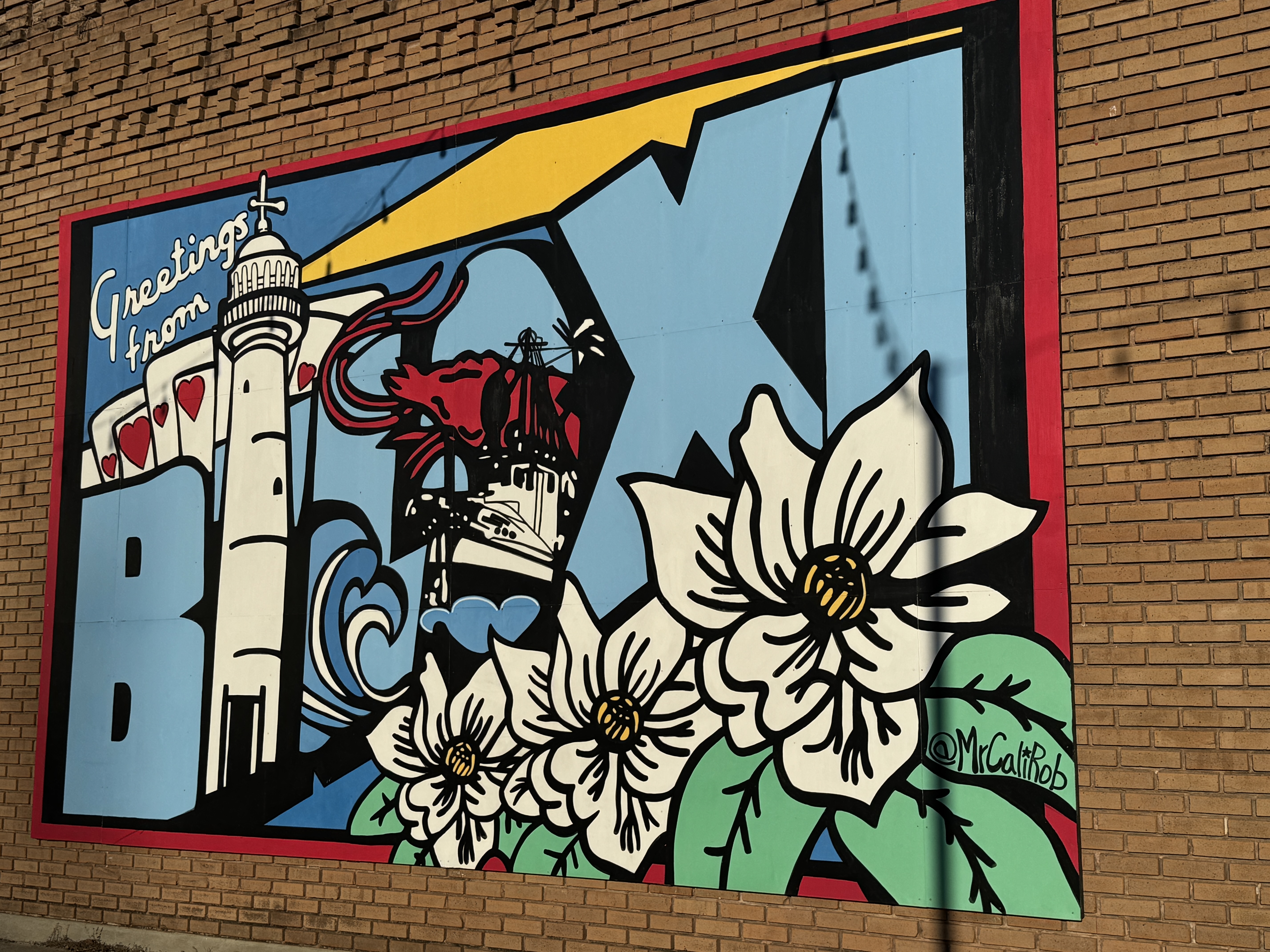 For geographical purposes, Coastal Mississippi spans 62 miles along the Gulf of Mexico and overlooks the Mississippi Sound. The area comprises three counties: Jackson, Harrison and Hancock. Within these counties, there are twelve cities. During my time in the region, I focused on three of these towns: Biloxi, Gulfport and Bay St. Louis.
For geographical purposes, Coastal Mississippi spans 62 miles along the Gulf of Mexico and overlooks the Mississippi Sound. The area comprises three counties: Jackson, Harrison and Hancock. Within these counties, there are twelve cities. During my time in the region, I focused on three of these towns: Biloxi, Gulfport and Bay St. Louis.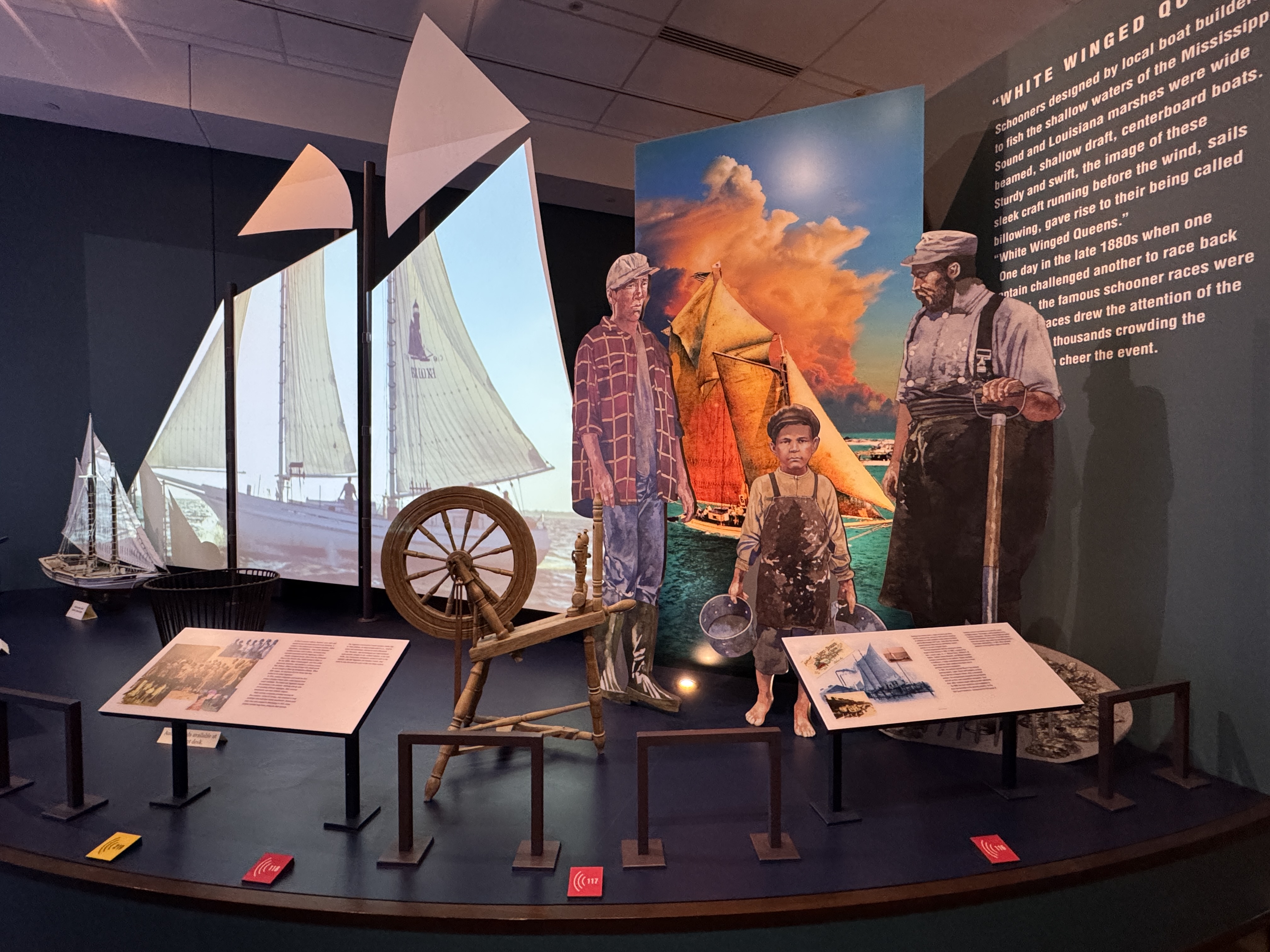 To get acclimated in Biloxi, start at the Biloxi Visitors Center, where you can take a deep dive into the city’s rich history, culture and connection to the great Mississippi through interactive displays and exhibits. The city is named for the Biloxi, a Native American people who once inhabited the area. Translated, the word Biloxi, means “First People.”
To get acclimated in Biloxi, start at the Biloxi Visitors Center, where you can take a deep dive into the city’s rich history, culture and connection to the great Mississippi through interactive displays and exhibits. The city is named for the Biloxi, a Native American people who once inhabited the area. Translated, the word Biloxi, means “First People.” 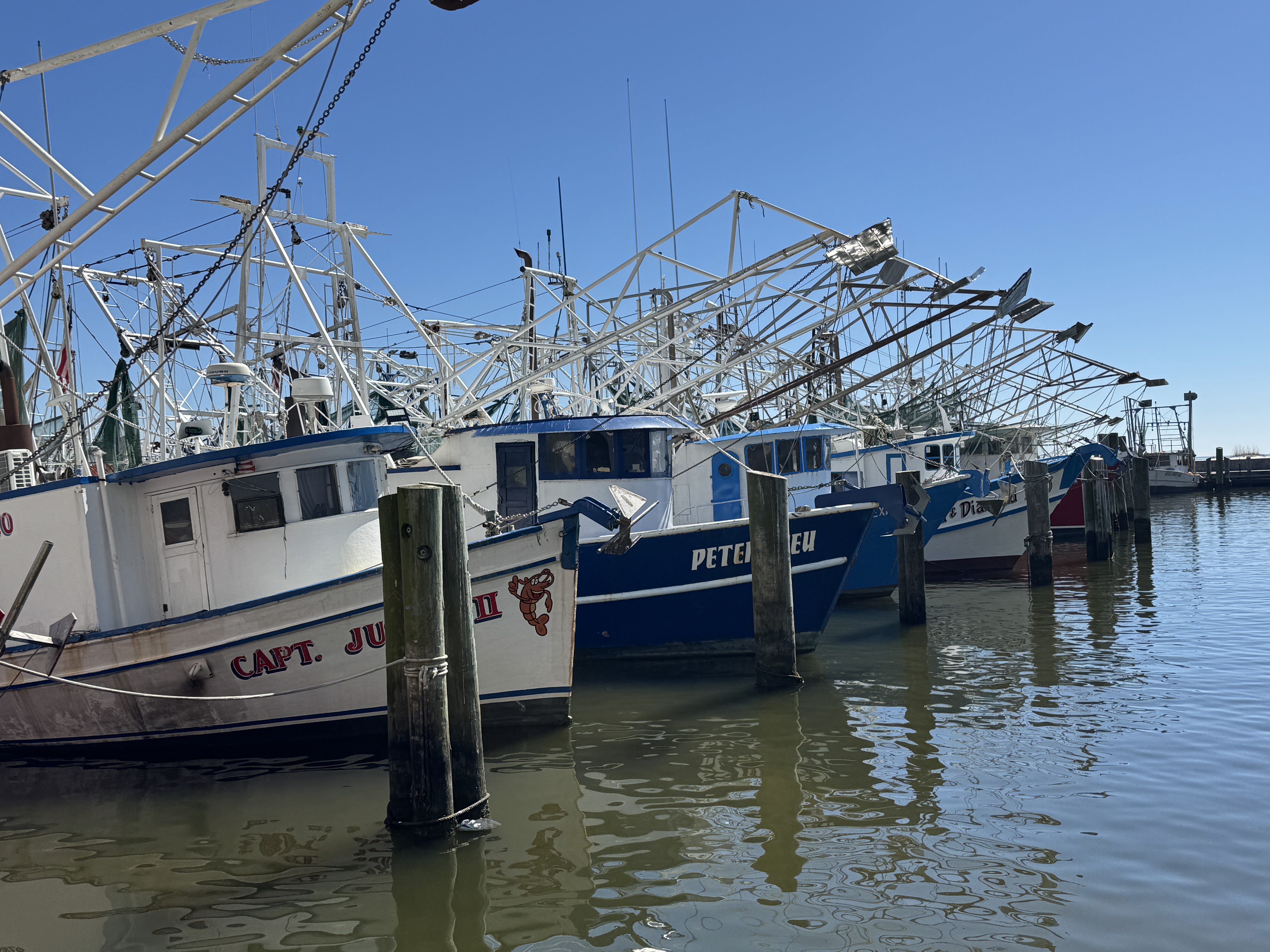 You’ll hear about the many individuals who came to work here, many in the thriving seafood industry, bringing their diverse cultures and traditions to enrich the fabric of society. Additionally, you’ll learn about the area’s dockside gaming scene and the numerous casinos that were established on the beachfront, creating the “Las Vegas of the South.” Big name entertainers performed here - everyone from Elvis to Tex Ritter, Hank Williams Sr., Jerry Lee Lewis and others.
You’ll hear about the many individuals who came to work here, many in the thriving seafood industry, bringing their diverse cultures and traditions to enrich the fabric of society. Additionally, you’ll learn about the area’s dockside gaming scene and the numerous casinos that were established on the beachfront, creating the “Las Vegas of the South.” Big name entertainers performed here - everyone from Elvis to Tex Ritter, Hank Williams Sr., Jerry Lee Lewis and others.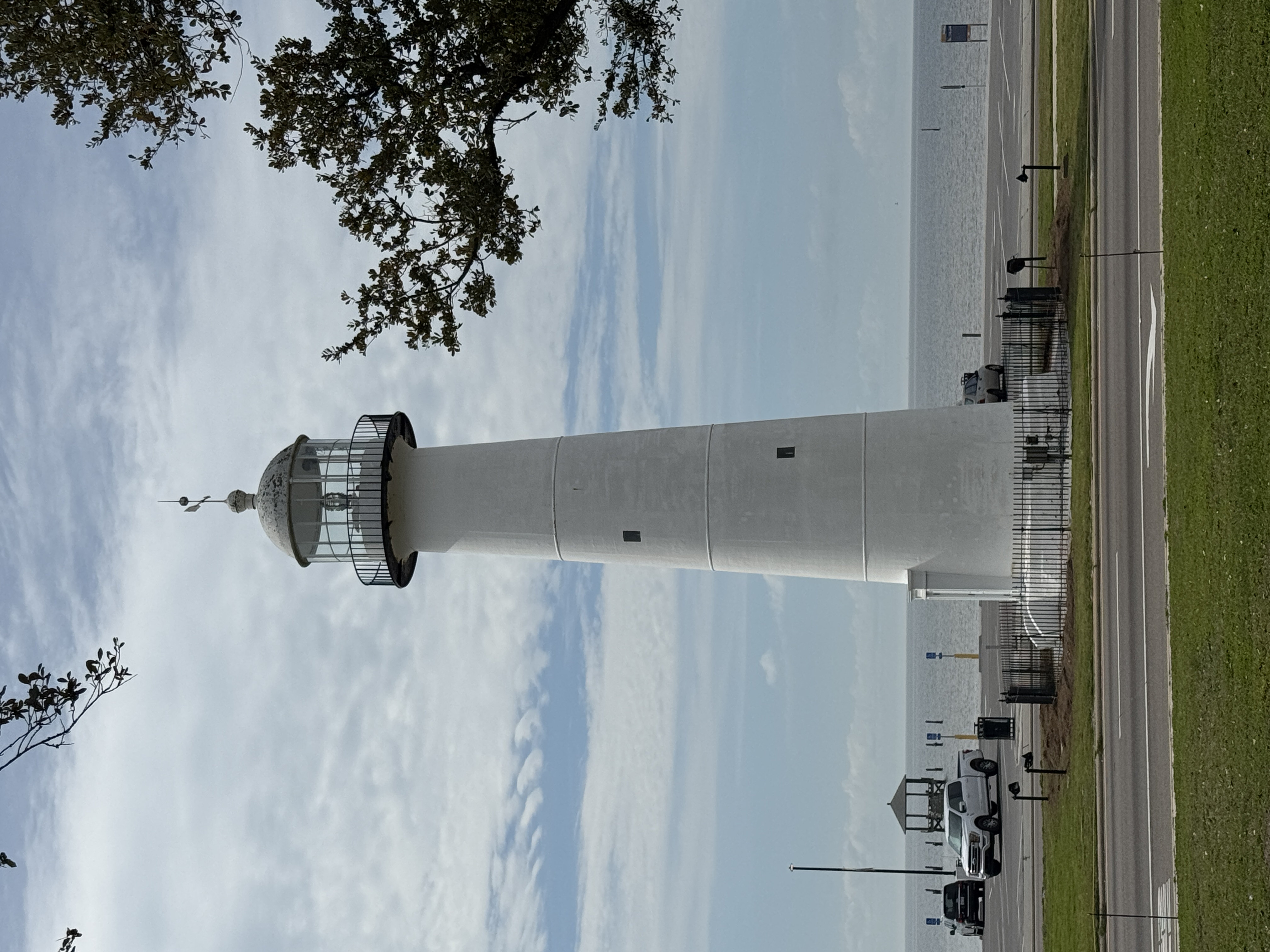 Outside the Visitor Center, you’ll have a picturesque view of the Gulf of Mexico and the famed Biloxi Lighthouse, one of the most photographed sites in this region. You can take a guided tour of this 65-foot tall beacon, one of the first cast-iron lighthouses in the South and a symbol of the town’s resilience through its many devastating storms and hurricanes. This landmark, which was built in 1848, has the distinction of being operated by several female lightkeepers, including Maria Younghans, who served in this position for 53 years.
Outside the Visitor Center, you’ll have a picturesque view of the Gulf of Mexico and the famed Biloxi Lighthouse, one of the most photographed sites in this region. You can take a guided tour of this 65-foot tall beacon, one of the first cast-iron lighthouses in the South and a symbol of the town’s resilience through its many devastating storms and hurricanes. This landmark, which was built in 1848, has the distinction of being operated by several female lightkeepers, including Maria Younghans, who served in this position for 53 years.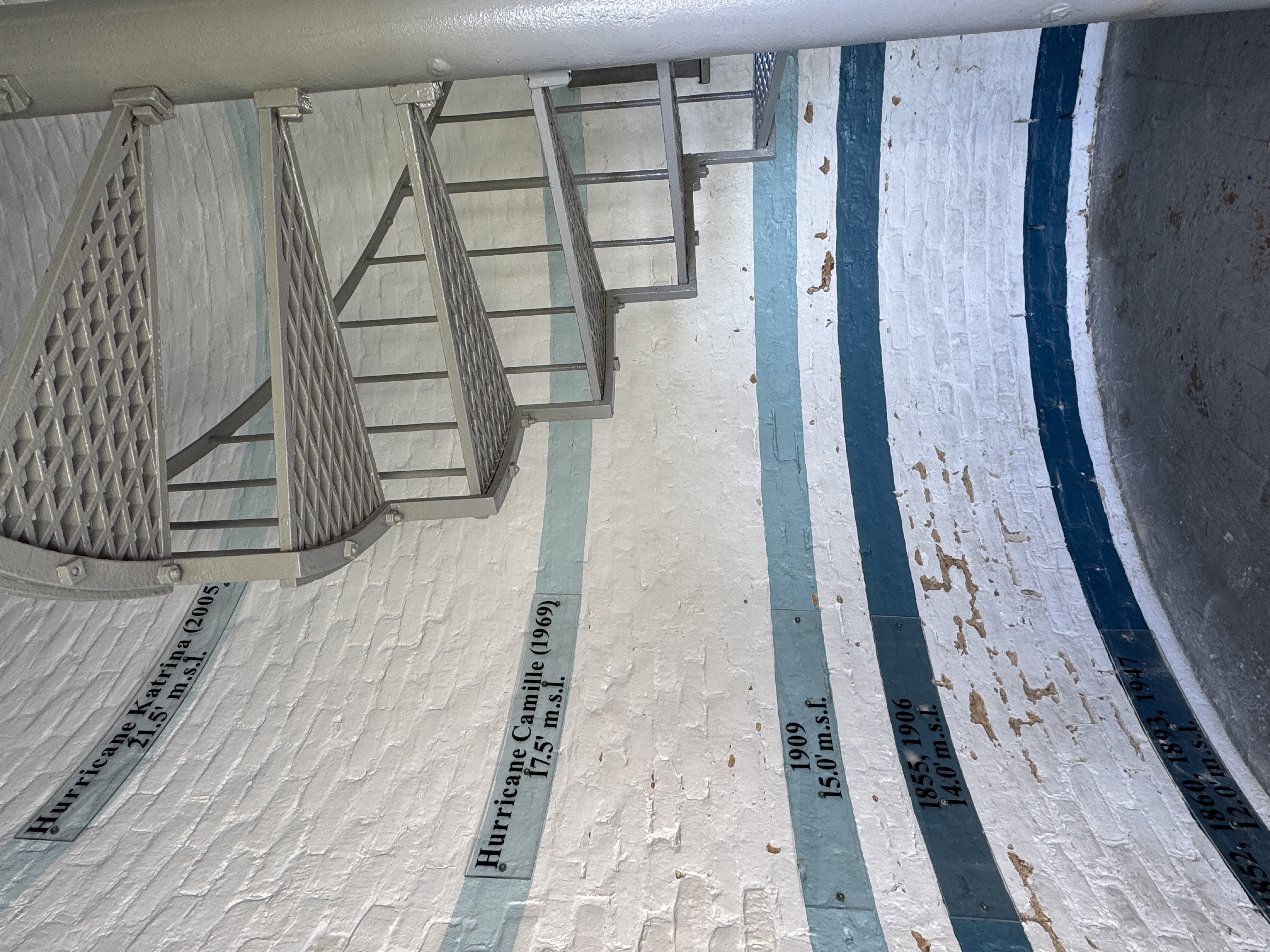 In 2005, Hurricane Katrina did a number on the lighthouse, engulfing much of it with water, breaking windows and bricks, and destroying the electrical system. Thankfully, this stalwart sentinel was restored and re-opened for public tours in 2010.
In 2005, Hurricane Katrina did a number on the lighthouse, engulfing much of it with water, breaking windows and bricks, and destroying the electrical system. Thankfully, this stalwart sentinel was restored and re-opened for public tours in 2010.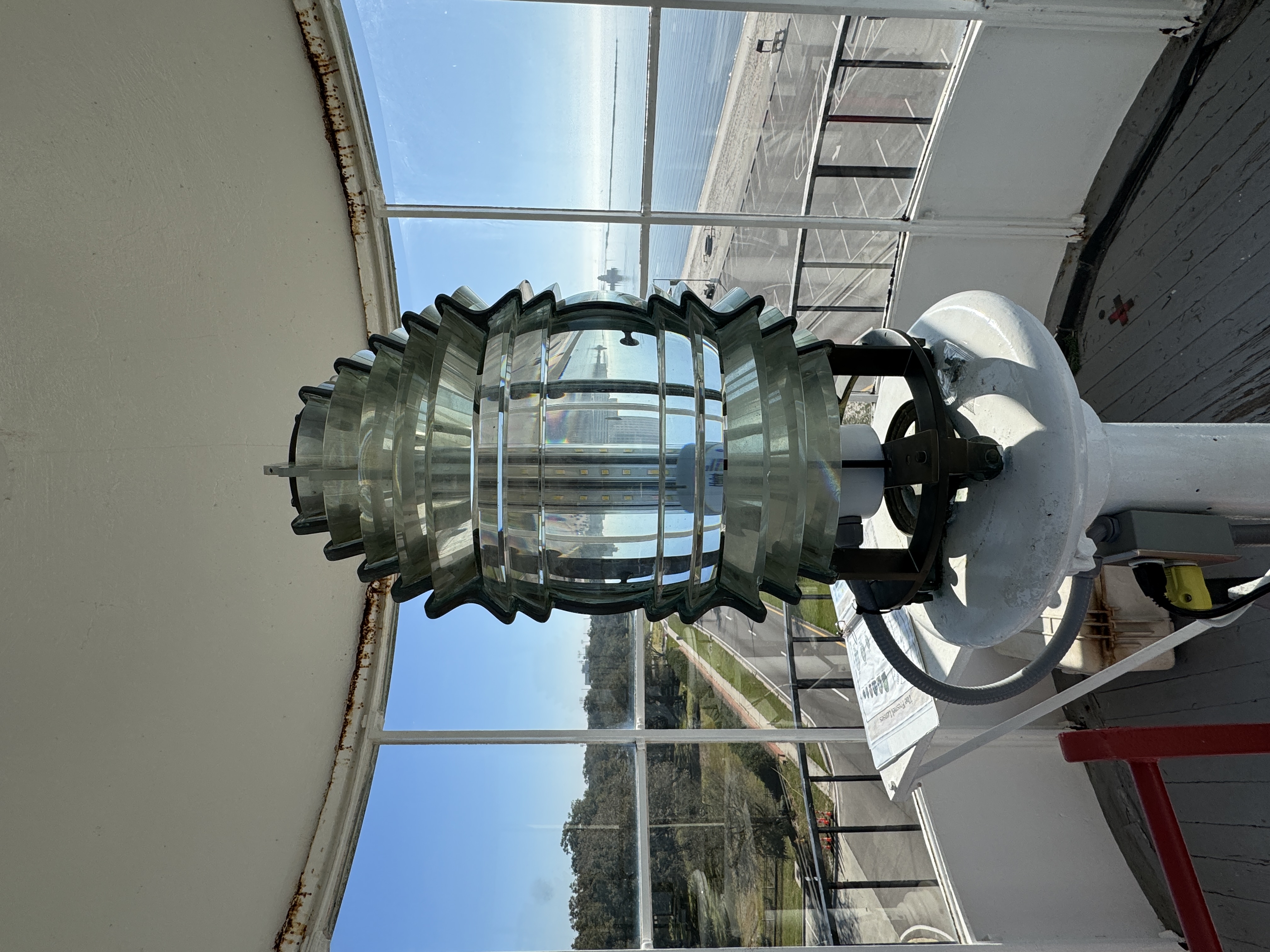 Climb to the top, which involves a spiral staircase, ladder and trap door, leading into the lightroom. As you ascend, look for the waterlines from the many hurricanes, going as far back as 100 years. Your efforts will be rewarded with a spectacular panorama, where miles of white sand beach appear to go on for as far as the eye can see.
Climb to the top, which involves a spiral staircase, ladder and trap door, leading into the lightroom. As you ascend, look for the waterlines from the many hurricanes, going as far back as 100 years. Your efforts will be rewarded with a spectacular panorama, where miles of white sand beach appear to go on for as far as the eye can see. To get a good feel for downtown Biloxi, enjoy a self-guided stroll with the help of a map from the Visitor Center. You’ll get a glimpse into the city’s history and architectural heritage, while discovering some of its most significant buildings, a number that are listed on the National Register of Historic Places.
To get a good feel for downtown Biloxi, enjoy a self-guided stroll with the help of a map from the Visitor Center. You’ll get a glimpse into the city’s history and architectural heritage, while discovering some of its most significant buildings, a number that are listed on the National Register of Historic Places.
The Fisherman’s Cottage, for example, is typical of those built by local fishermen around the turn-of-the-century and is notable for its decorative woodwork. Nearby is the Old Biloxi Library, the finest Spanish Colonial Revival building in town, with its twisted columns, gables and embellished elements. The Clemens House harkens back to the antebellum tourism period, with a gothic molded architrave. And the Magnolia Hotel, circa 1847, is one of the most historic buildings on the Gulf Coast. No longer a hotel, it is now Felix's Steak & Oyster Bar.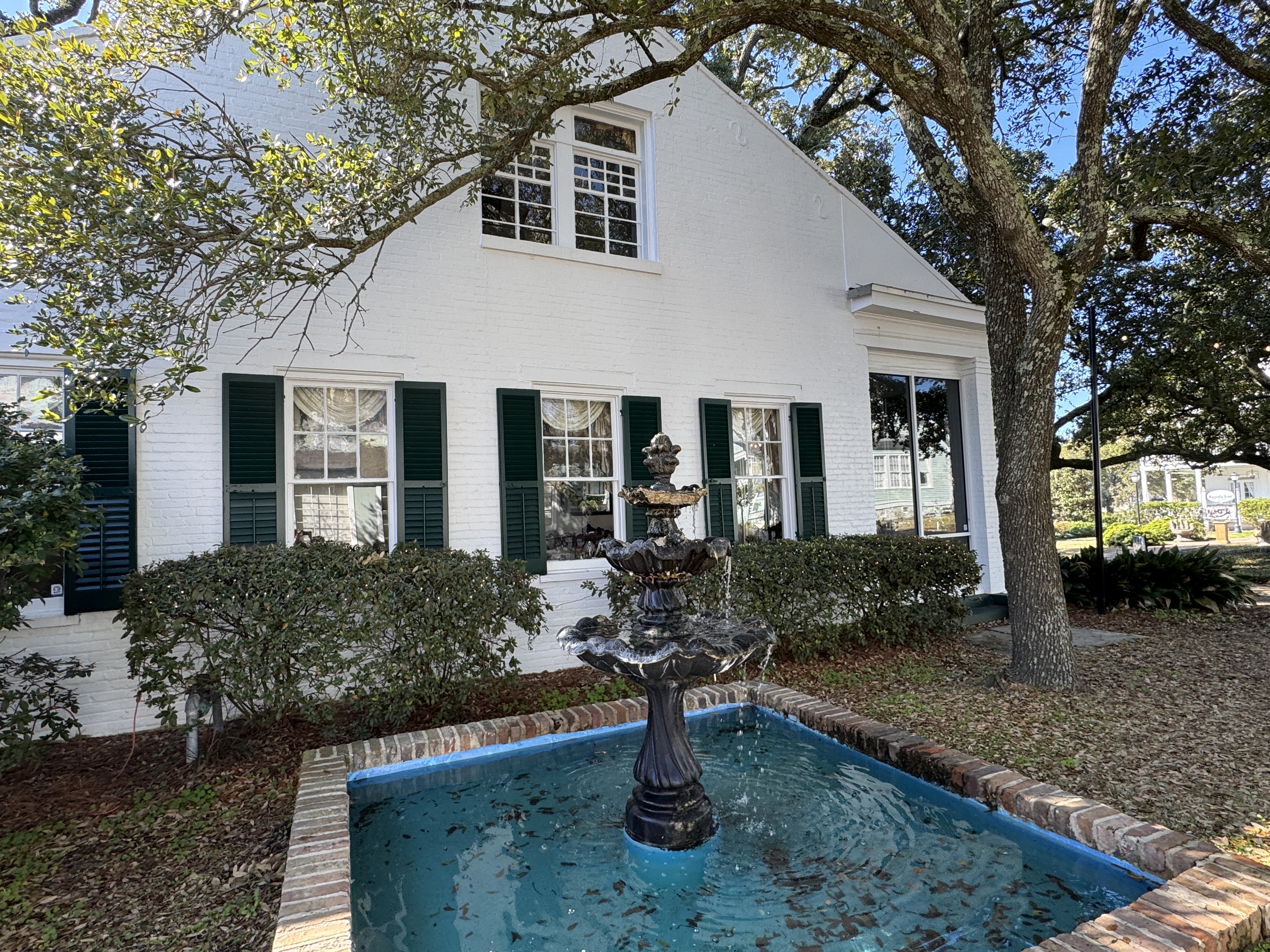 Nearby is the Brunet-Fourchy House, now Mary Mahoney’s Old French House, a notable restaurant. It’s one of the earliest documented buildings in town and has a New Orleans influence.
Nearby is the Brunet-Fourchy House, now Mary Mahoney’s Old French House, a notable restaurant. It’s one of the earliest documented buildings in town and has a New Orleans influence.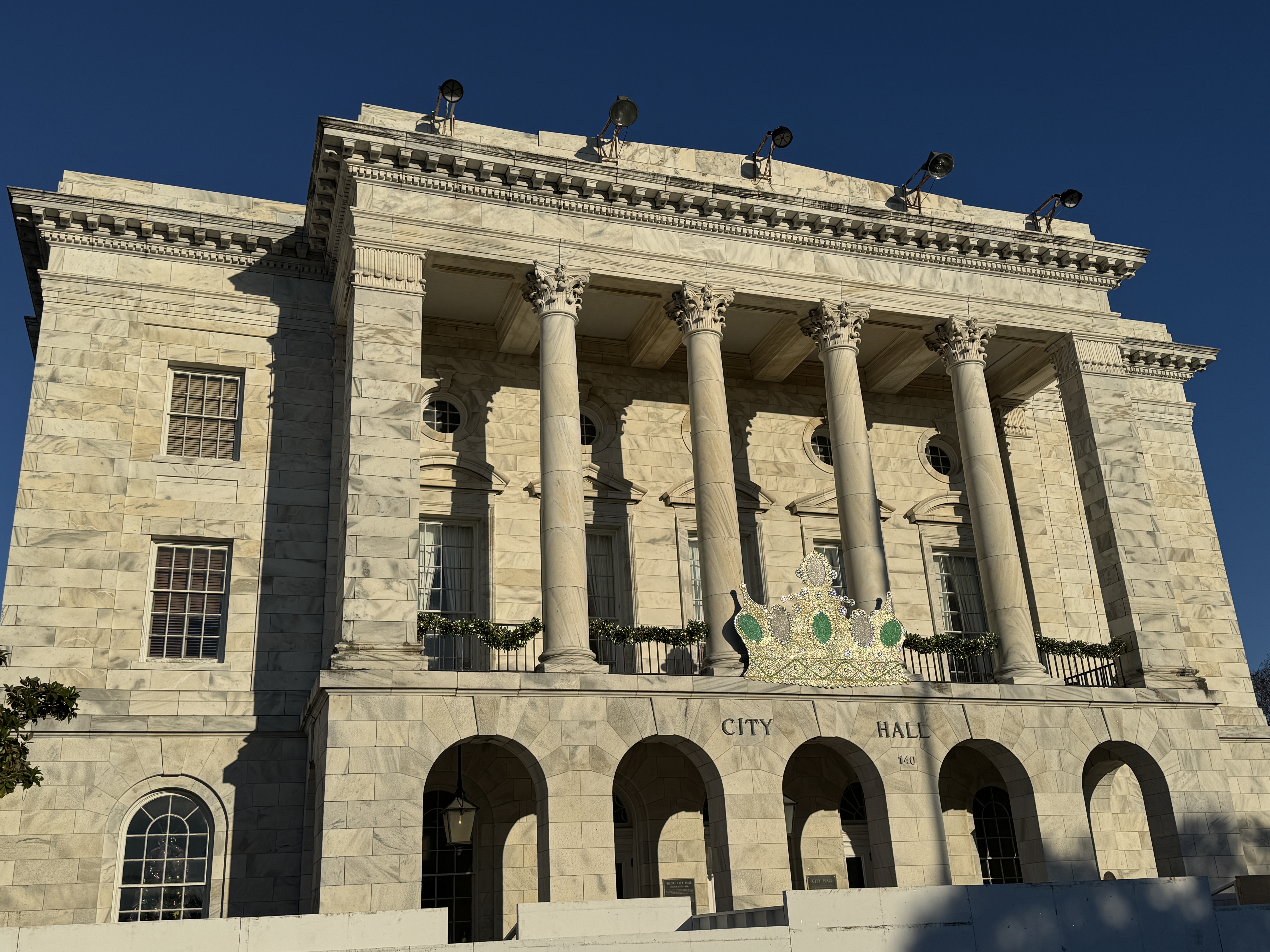 Another prominent structure is Brown and Mitchell Inc., featuring a large cupola with Renaissance style detail. And a few blocks away you’ll find the original U.S. Post Office and Customs House, now City Hall, one of the best examples of the Neoclassical Revival in the South. With its grand portico, white marble walls and arched windows, this building makes a statement. And being that it was Mardi Gras season during my visit, it was decked out in festive style, as were many of the homes and businesses in town.
Another prominent structure is Brown and Mitchell Inc., featuring a large cupola with Renaissance style detail. And a few blocks away you’ll find the original U.S. Post Office and Customs House, now City Hall, one of the best examples of the Neoclassical Revival in the South. With its grand portico, white marble walls and arched windows, this building makes a statement. And being that it was Mardi Gras season during my visit, it was decked out in festive style, as were many of the homes and businesses in town.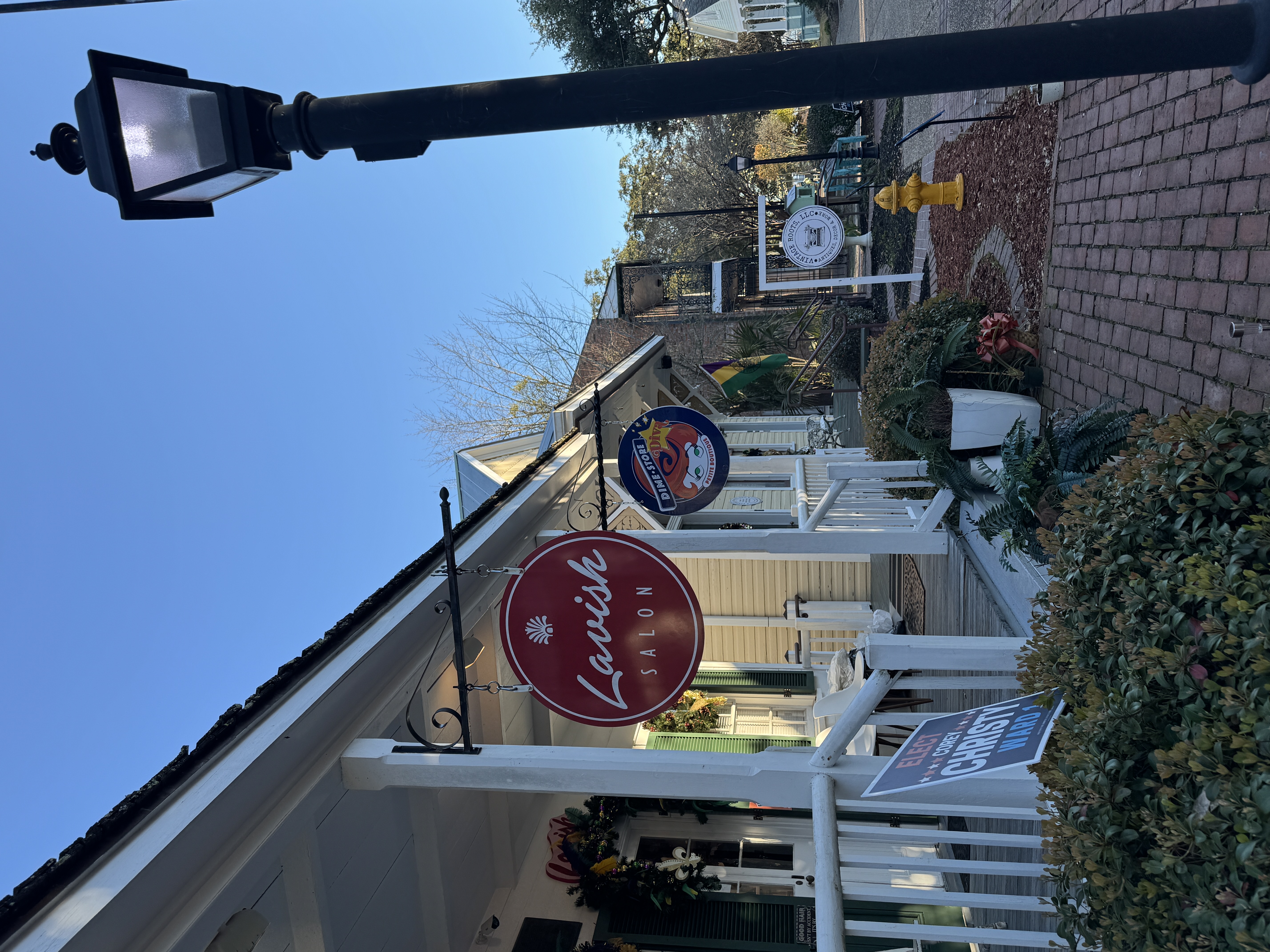 My favorite street was Rue Magnolia, with its Neoclassical and Victorian wood frame houses flanking both sides of the walkway. The buildings have been adapted for other uses, several of which are quaint shops, like Vintage Roots. Chocked full of antiques, décor pieces and vintage clothing, it’s a treasure trove of eclectic items.
My favorite street was Rue Magnolia, with its Neoclassical and Victorian wood frame houses flanking both sides of the walkway. The buildings have been adapted for other uses, several of which are quaint shops, like Vintage Roots. Chocked full of antiques, décor pieces and vintage clothing, it’s a treasure trove of eclectic items.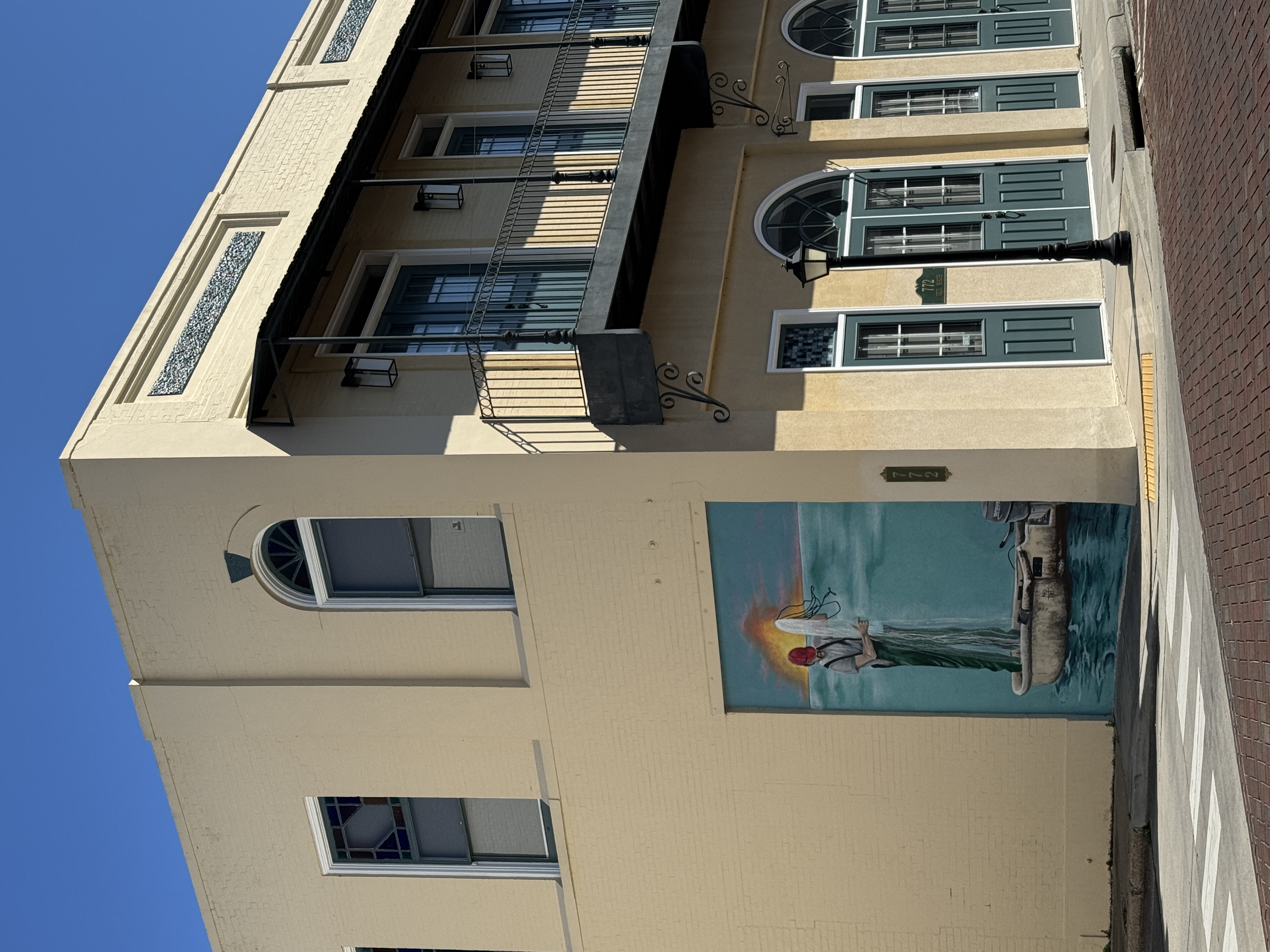 It's hard to miss all the murals that dot the exterior walls of many of the buildings in town. They give the city splashes of color, along with insights into its history.
It's hard to miss all the murals that dot the exterior walls of many of the buildings in town. They give the city splashes of color, along with insights into its history.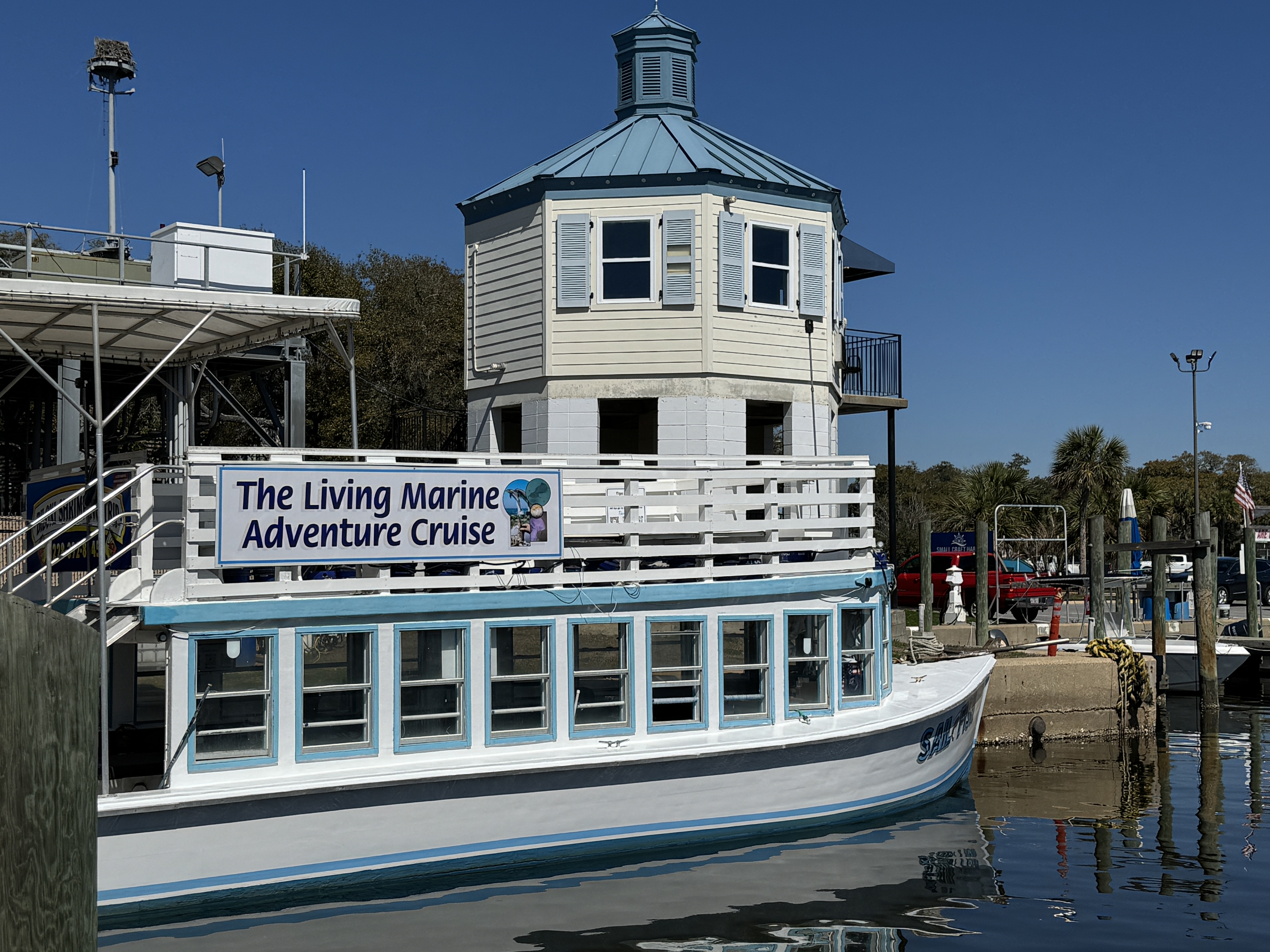 One of the more popular activities in the area is a Biloxi Shrimping Trip. Of course I had to partake in this experience, though I learned that the shrimping season doesn’t begin until late May or early June when the water temps warm up. Alas, no shrimp!
One of the more popular activities in the area is a Biloxi Shrimping Trip. Of course I had to partake in this experience, though I learned that the shrimping season doesn’t begin until late May or early June when the water temps warm up. Alas, no shrimp!
Instead, we motored through protected waters between Deer Island and the Biloxi shoreline and got to see and hear, via the captain’s narration, how a shrimping net operates. As the net was pulled in, a bounty of local marine creatures was presented for all to get an up close look at the biodiversity of Coastal Mississippi. All were eventually returned to the sea, though most were eagerly grabbed up by hungry gulls and one very determined pelican.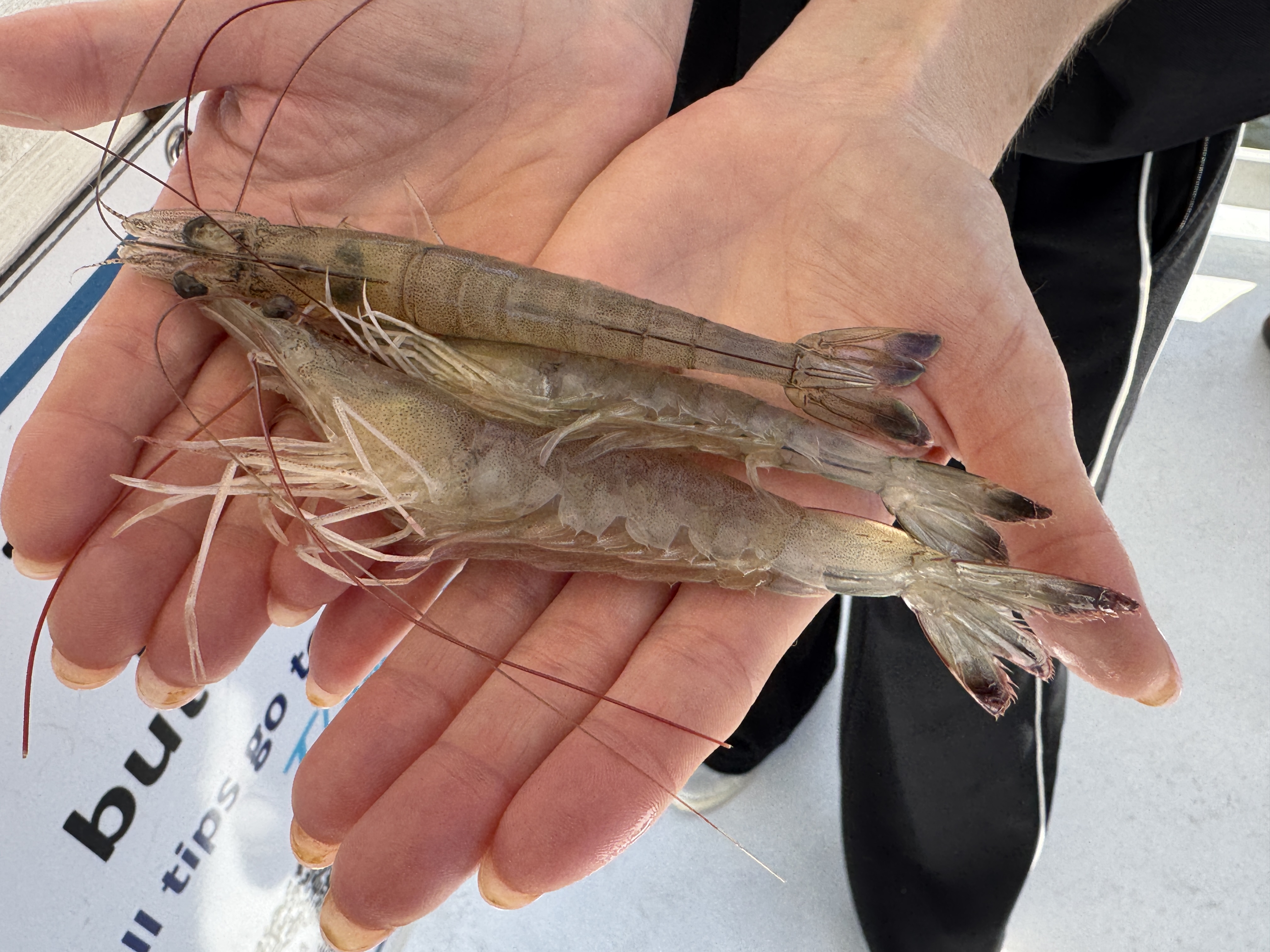 Though we didn’t pull in any shrimp, as expected, there was a tank on board full of these crustaceans. Those who wanted could hold and examine them.
Though we didn’t pull in any shrimp, as expected, there was a tank on board full of these crustaceans. Those who wanted could hold and examine them.
Captain Mike and Dave the deckhand gave us a rundown on the lifecycle of a shrimp (9-13 months) and told us that one female lays anywhere from a half million to a million eggs. I was surprised to find out that shrimp are born male, then as they grow, they either change to female or remain male.
There are 300 shrimping boats that ply the waters here during the season, which typically runs from June 1st through the end of December. And the season doesn’t open until the shrimp are at least four inches in size. Shrimpers go out at night and in one trip, they can get 800-1,000 pounds of shrimp. There is no quota for a shrimp boat.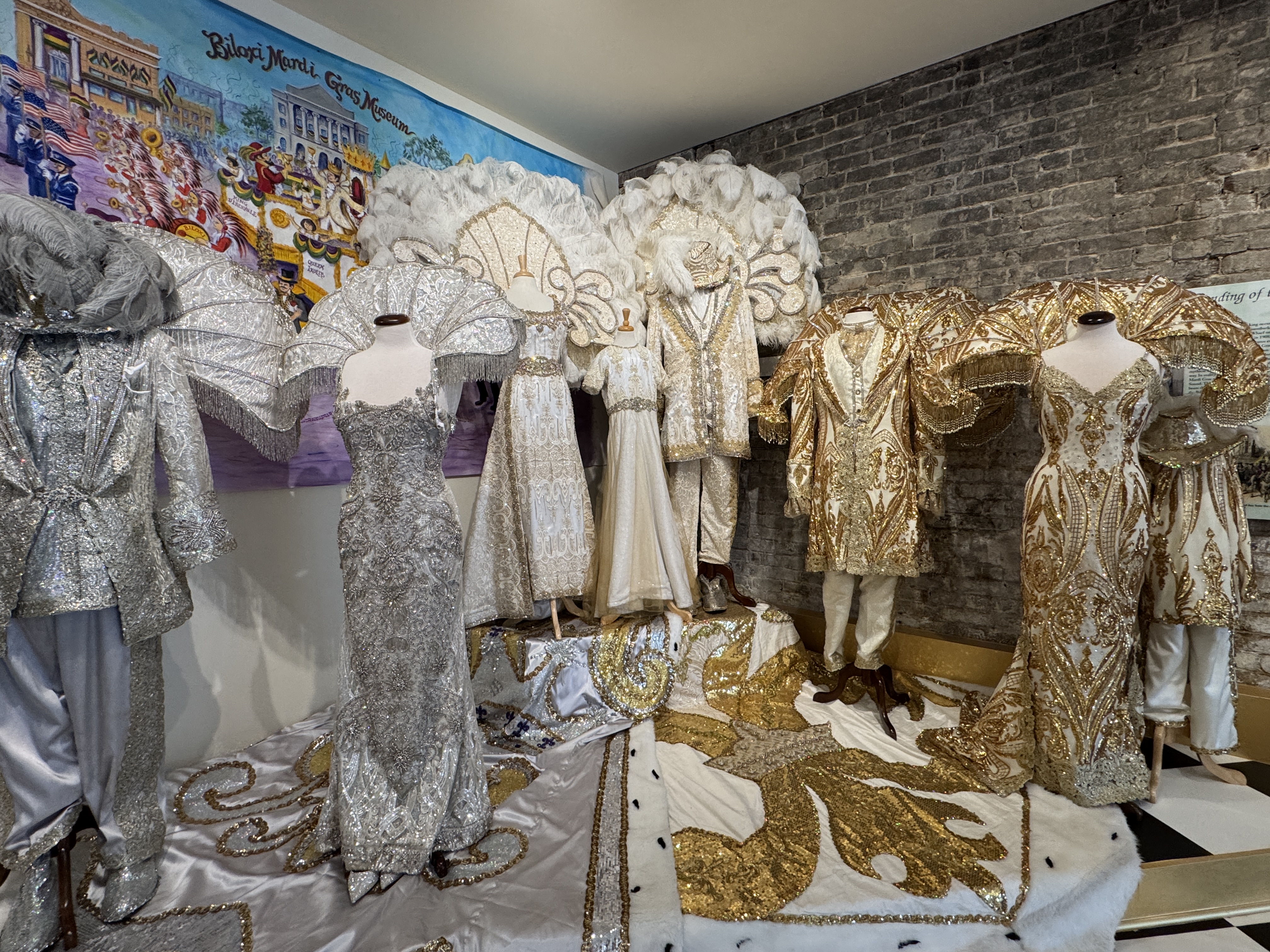 If you’re interested in the history of Coast Carnival, head over to the Coastal Mississippi Mardi Gras Museum. All things Mardi Gras are on display, including elaborate costumes, royal regalia, photos, memorabilia and more. Ask Director Abreeza Thomas to give you a tour for a better understanding of the pageantry, traditions and cultural significance of this age-old and much beloved festival.
If you’re interested in the history of Coast Carnival, head over to the Coastal Mississippi Mardi Gras Museum. All things Mardi Gras are on display, including elaborate costumes, royal regalia, photos, memorabilia and more. Ask Director Abreeza Thomas to give you a tour for a better understanding of the pageantry, traditions and cultural significance of this age-old and much beloved festival.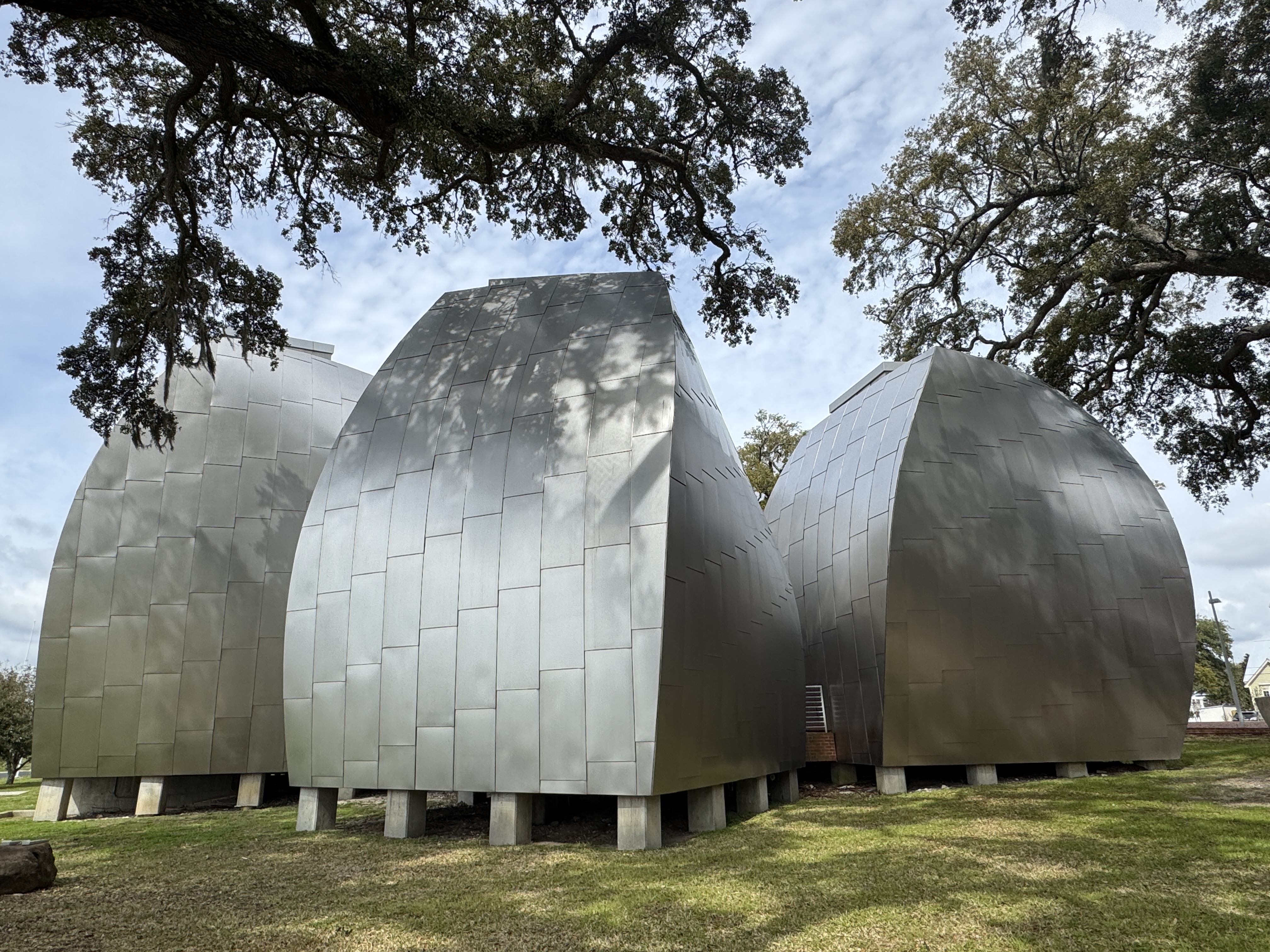 I always like to seek out art attractions during my travels and on my list was the Ohr-O-Keefe Museum of Art. Designed by renowned architect Frank Gehry, the museum is situated across the road from the waterfront on spacious grounds full of majestic oak trees dripping with moss. It is a tribute to Mississippi’s master potter, George Ohr.
I always like to seek out art attractions during my travels and on my list was the Ohr-O-Keefe Museum of Art. Designed by renowned architect Frank Gehry, the museum is situated across the road from the waterfront on spacious grounds full of majestic oak trees dripping with moss. It is a tribute to Mississippi’s master potter, George Ohr.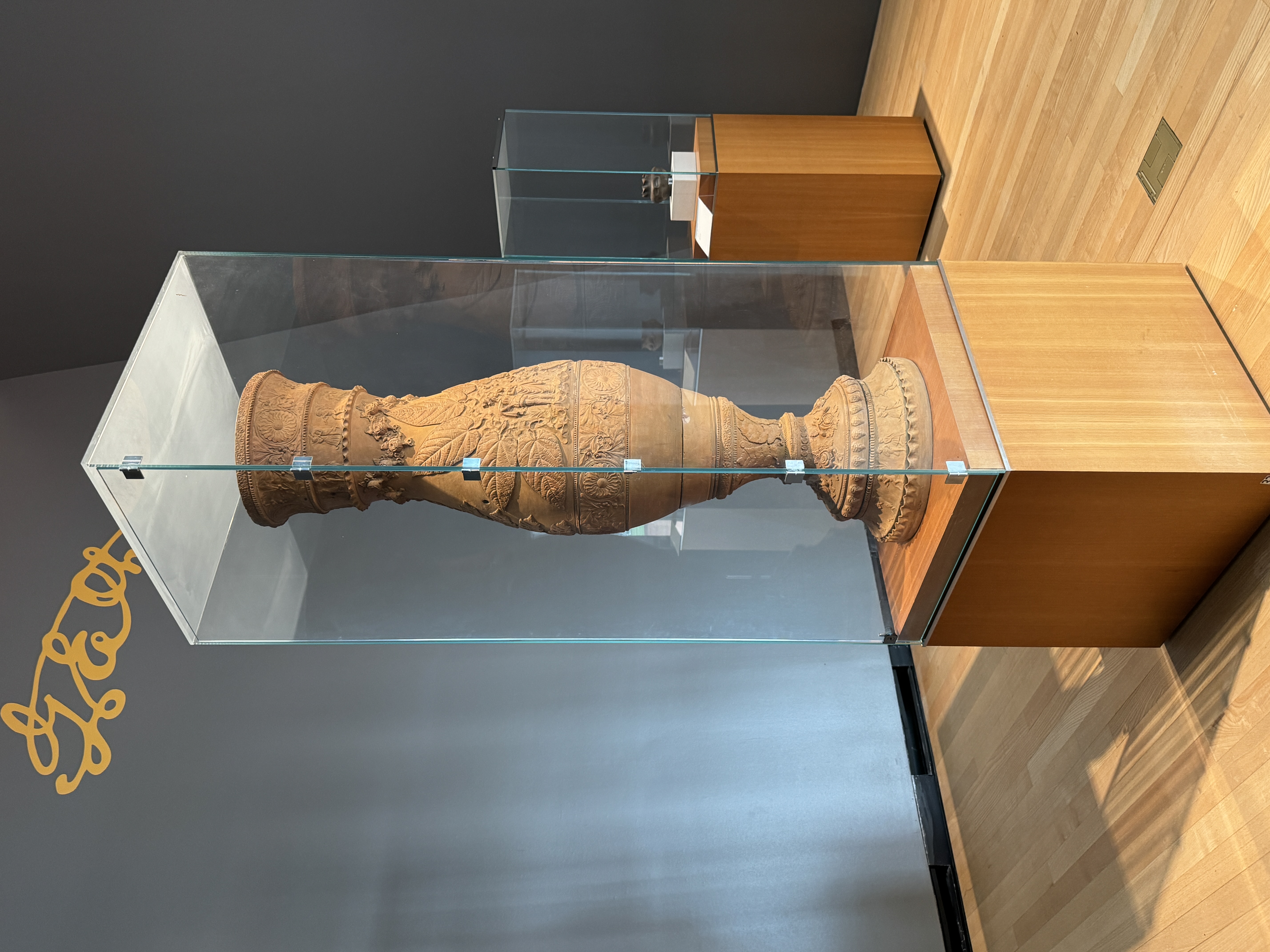 Ohr was a pioneer for stoneware ceramics in the U.S. today and an early American leader in the American modernist movement. Known as “The Mad Potter of Biloxi,” he was experimental in his artistic style and defied conventional notions of ceramics. His appearance was equally as unconventional, marked by a large and unruly mustache.
Ohr was a pioneer for stoneware ceramics in the U.S. today and an early American leader in the American modernist movement. Known as “The Mad Potter of Biloxi,” he was experimental in his artistic style and defied conventional notions of ceramics. His appearance was equally as unconventional, marked by a large and unruly mustache.
Gehry’s contemporary buildings, which resemble enormous bongo drums, are full of exhibits of Ohr’s innovative ceramics and fascinating installations. To appreciate Gehry’s iconic designs, go to the shoo fly lookout and gaze downward. A traditional shoo-fly is a unique form of Mississippi architecture that resembles a gazebo-like structure built around the base of a large tree, preferably an oak. The museum collection contains almost 200 pieces of Ohr pottery, as well as ceramics by Joseph Fortune Meyer and Toshiko Takaezu. Rotating exhibitions showcase other innovative artists of all media, many who have ties to the South.
The museum collection contains almost 200 pieces of Ohr pottery, as well as ceramics by Joseph Fortune Meyer and Toshiko Takaezu. Rotating exhibitions showcase other innovative artists of all media, many who have ties to the South.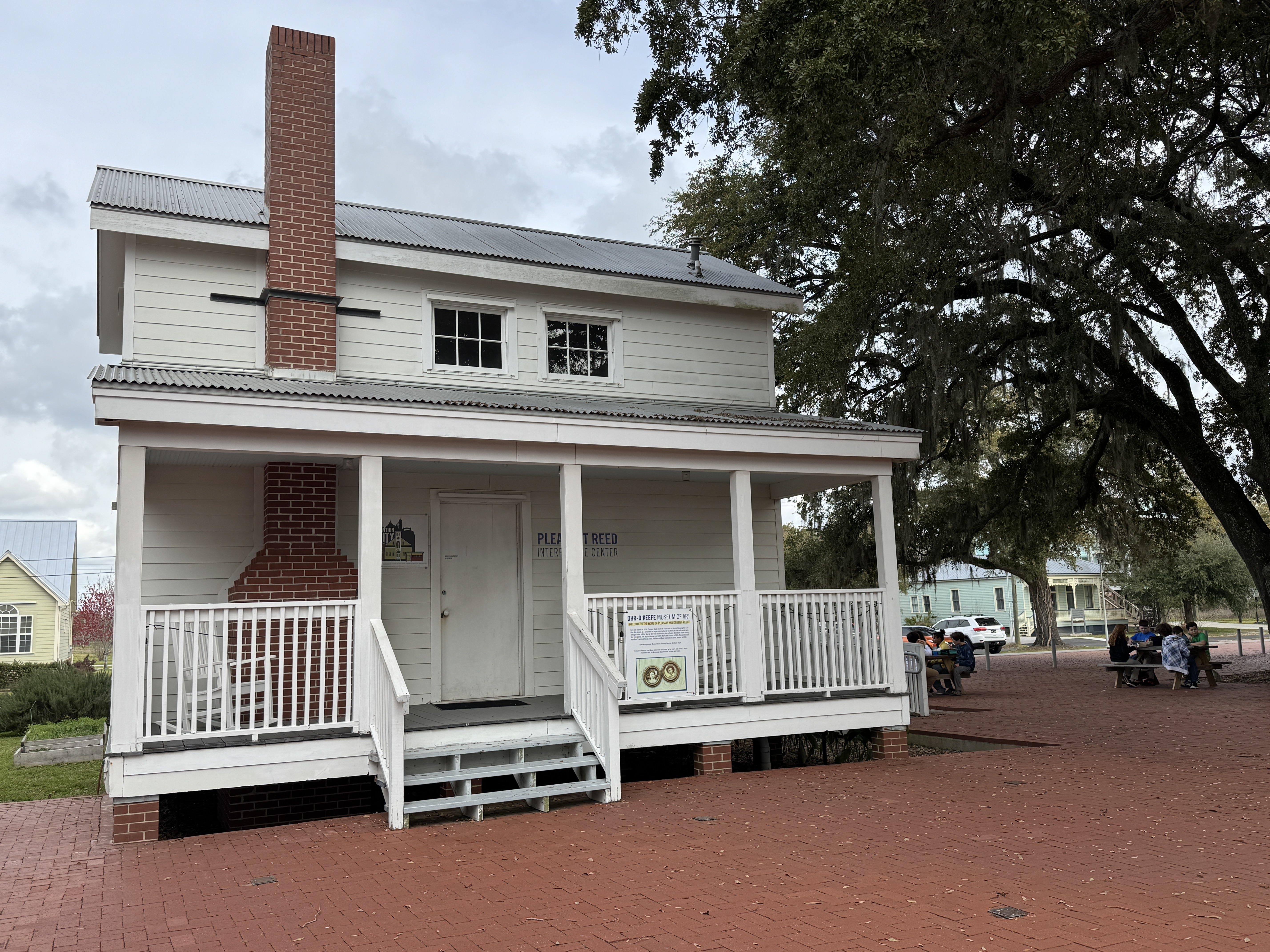 Also onsite is the reconstructed Pleasant Reed House, an 1880s sidehall shotgun style home originally built by Pleasant Reed, a former slave. Reed was the first freed slave to purchase his own land in Biloxi. Unfortunately, the original house was destroyed by Hurricane Katrina, however museum curators were able to save archival materials and photos. It was subsequently rebuilt and now features exhibits on local African American history and serves as an interpretive center.
Also onsite is the reconstructed Pleasant Reed House, an 1880s sidehall shotgun style home originally built by Pleasant Reed, a former slave. Reed was the first freed slave to purchase his own land in Biloxi. Unfortunately, the original house was destroyed by Hurricane Katrina, however museum curators were able to save archival materials and photos. It was subsequently rebuilt and now features exhibits on local African American history and serves as an interpretive center.
When you’re done exploring Biloxi, drive to charming Bay St. Louis. It’s a scenic 45-minute route along the lovely coastline. As you drive, note the houses on stilts and various hurricane-damaged trees that have been transformed into pieces of art.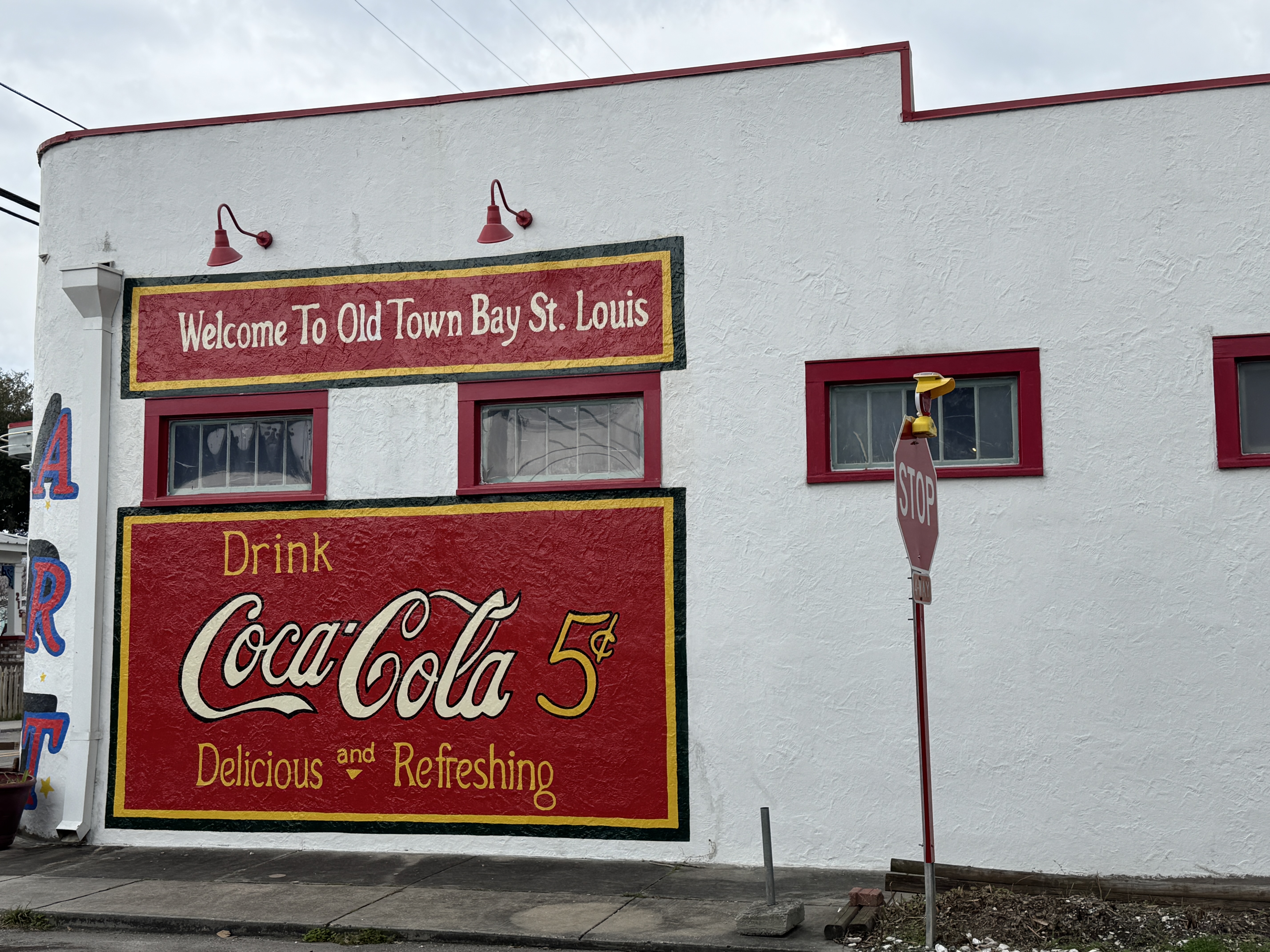 Bay St. Louis has a reputation for its blend of arts and culture, not to mention its scenic Beach Boulevard Boardwalk Trail, where you can soak in all the natural beauty.
Bay St. Louis has a reputation for its blend of arts and culture, not to mention its scenic Beach Boulevard Boardwalk Trail, where you can soak in all the natural beauty.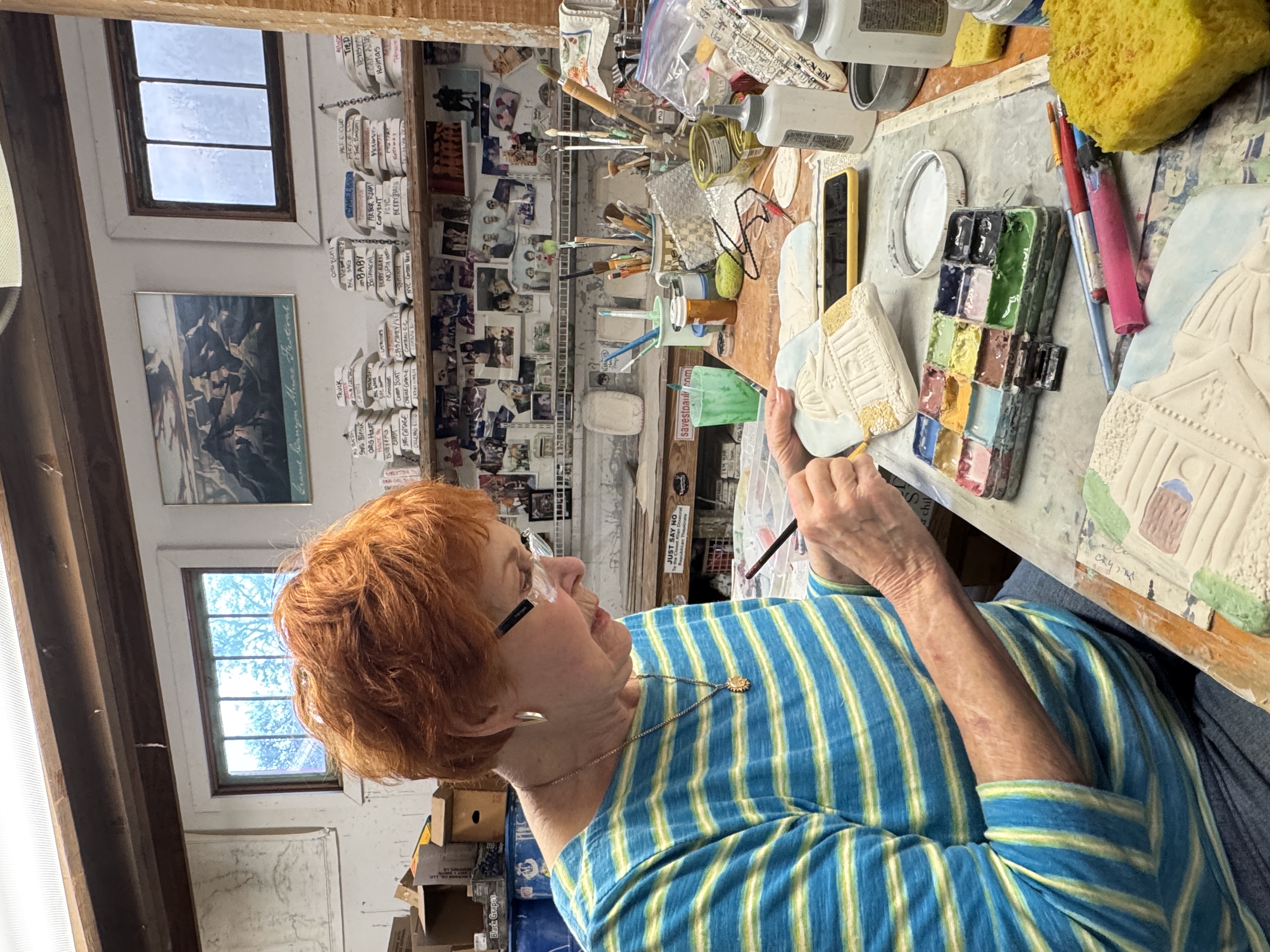 Stroll the town’s streets and peruse The Shops at Century Hall, go antiquing, search for vinyl treasures at Good Earth Records and pop into Gallery 220, a cooperative gallery showcasing the work of talented local artists. Then visit the Alice Moseley Folk Art Museum.
Stroll the town’s streets and peruse The Shops at Century Hall, go antiquing, search for vinyl treasures at Good Earth Records and pop into Gallery 220, a cooperative gallery showcasing the work of talented local artists. Then visit the Alice Moseley Folk Art Museum.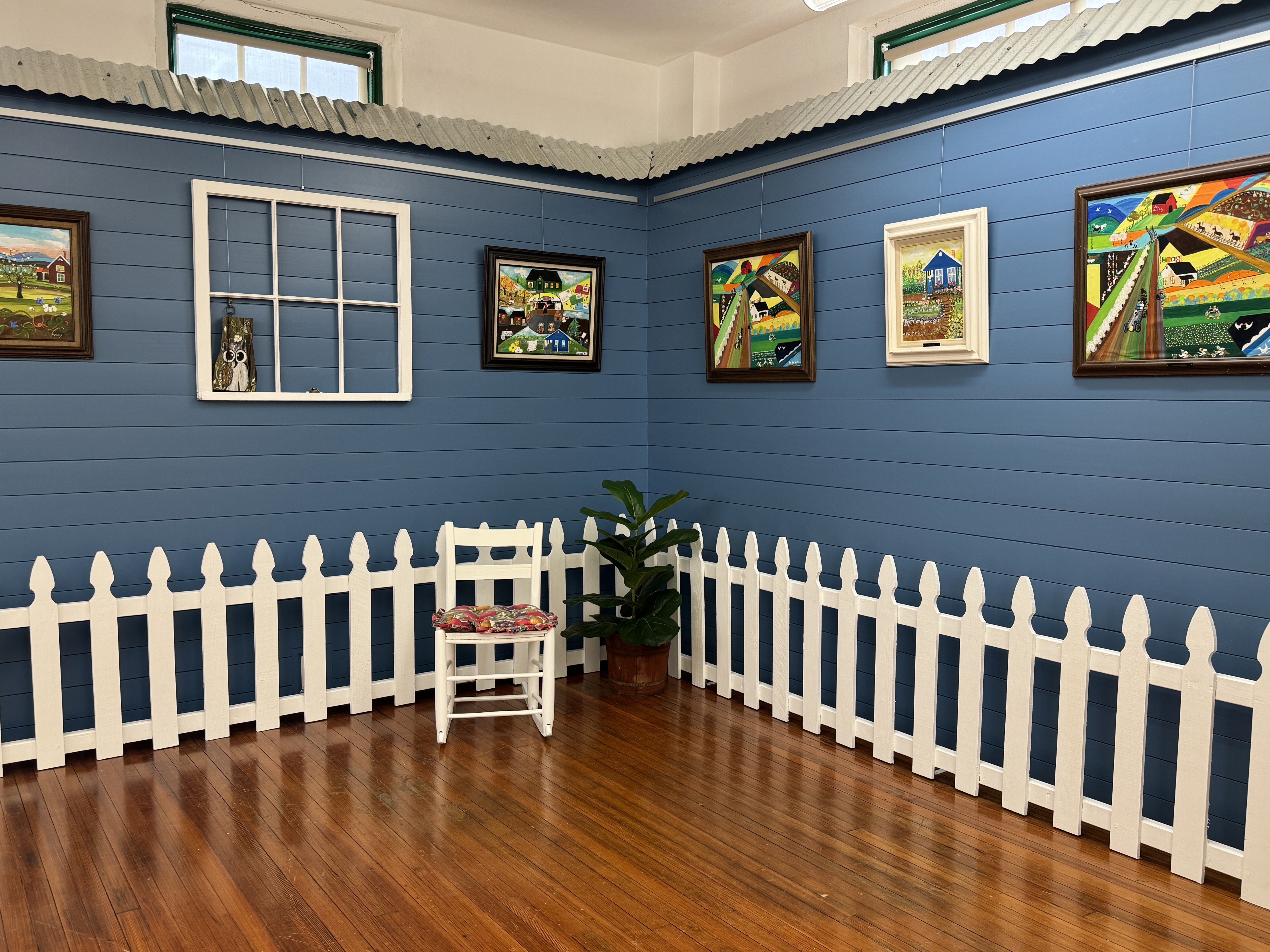 Located inside the historic Bay St. Louis train depot, the museum is dedicated to Alice Moseley, a nationally acclaimed folk artists, humorist and storyteller. Mosely was featured in a variety of magazines and also appeared on public television’s “Mississippi Roads.” She began receiving acclaim and had a successful career while living in Pope, Mississippi, exhibiting mostly in shows in Memphis. Later, she moved to Bay St. Louis.
Located inside the historic Bay St. Louis train depot, the museum is dedicated to Alice Moseley, a nationally acclaimed folk artists, humorist and storyteller. Mosely was featured in a variety of magazines and also appeared on public television’s “Mississippi Roads.” She began receiving acclaim and had a successful career while living in Pope, Mississippi, exhibiting mostly in shows in Memphis. Later, she moved to Bay St. Louis.
Over ninety of the artist’s original paintings are on display in the museum, along with a delightful video of Moseley telling jokes and tales of her life. Interestingly, Ms. Alice, as she was referred to by friends and admirers, was a self-taught artist, who began painting at the age of 65 as a hobby while caring for her Alzheimer’s-afflicted mother. She painted the world around her, depicting Southern life in the country. Her paintings are literary, as each scene tells a story.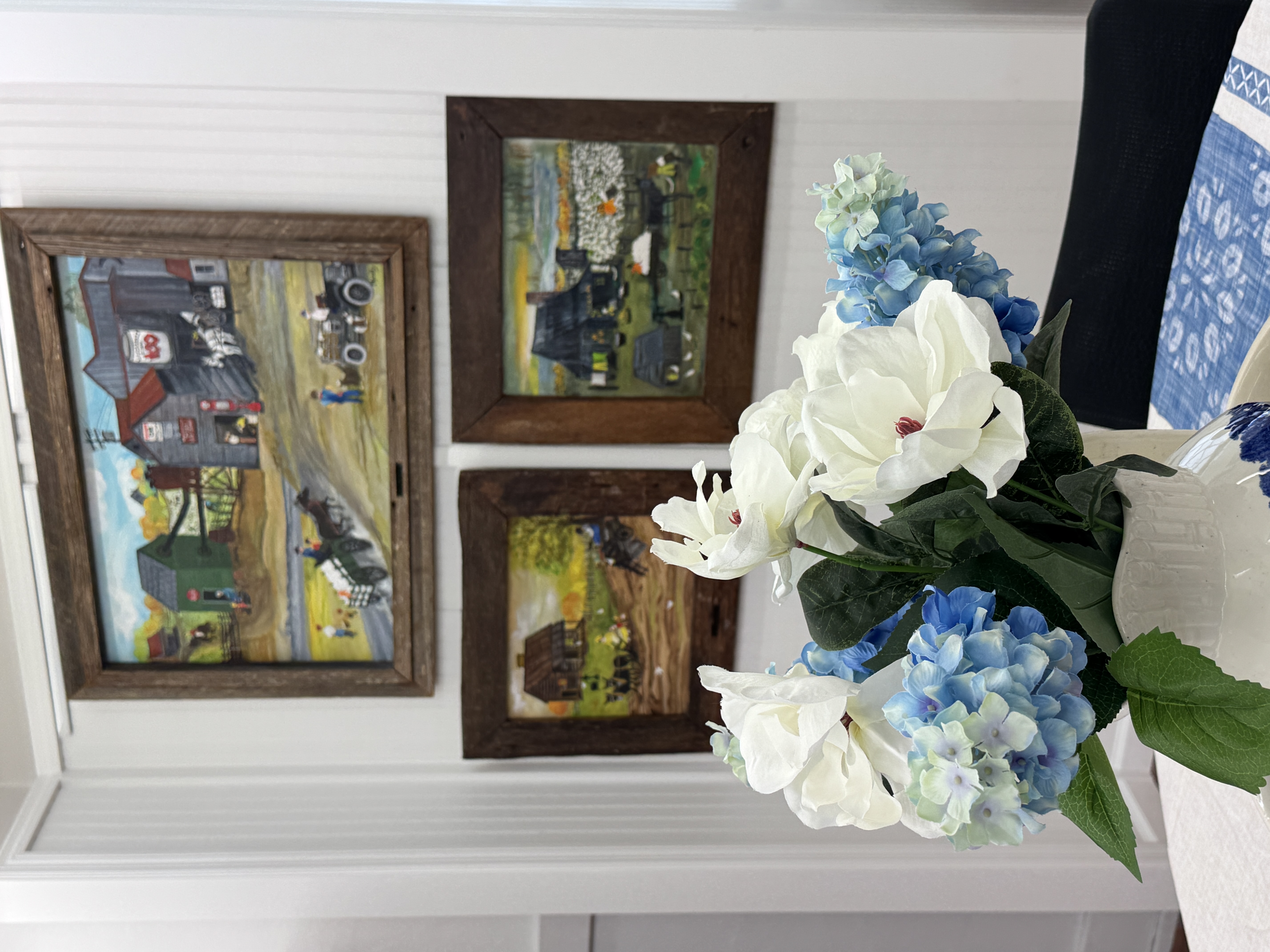 Ms. Alice always selected a title for her work prior to actually creating it. She never sketched, but simply put brush to canvas, using only acrylics because she said she was impatient and needed something that would dry quickly.
Ms. Alice always selected a title for her work prior to actually creating it. She never sketched, but simply put brush to canvas, using only acrylics because she said she was impatient and needed something that would dry quickly.
Though she passed away in 2004, Ms. Alice’s witticisms and wise words continue to resonate, as do her colorful and often comedic works of art.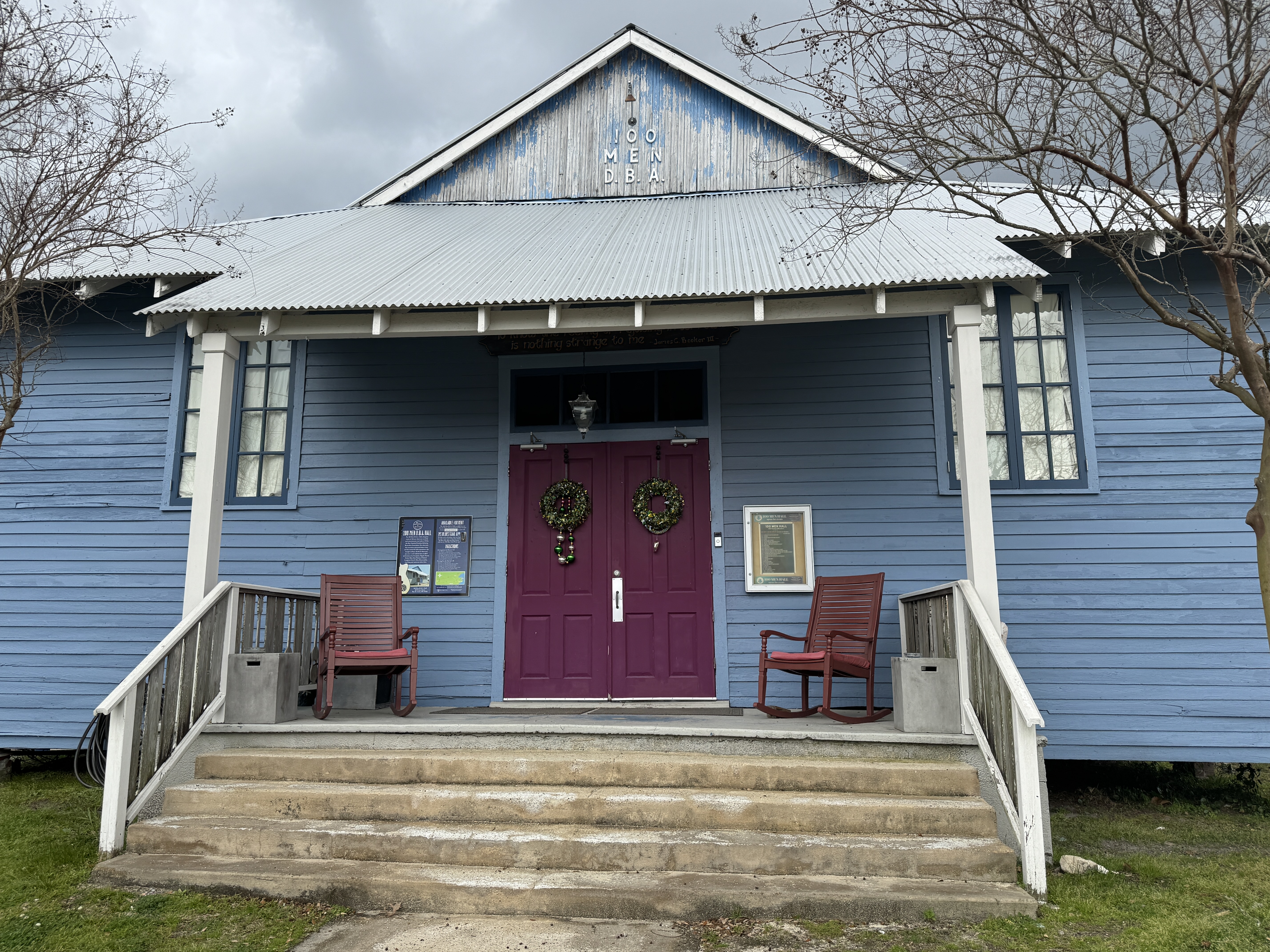 Make sure you also stop at The 100 Men D.B.A. Hall during your time in Bay St. Louis. Though you can’t go inside the building unless you’re attending one of the performances or events, you can read all about the history of this famous landmark on the plaque outside or on the Mississippi Blues Trail website. The information will help give you an understanding of its significance.
Make sure you also stop at The 100 Men D.B.A. Hall during your time in Bay St. Louis. Though you can’t go inside the building unless you’re attending one of the performances or events, you can read all about the history of this famous landmark on the plaque outside or on the Mississippi Blues Trail website. The information will help give you an understanding of its significance.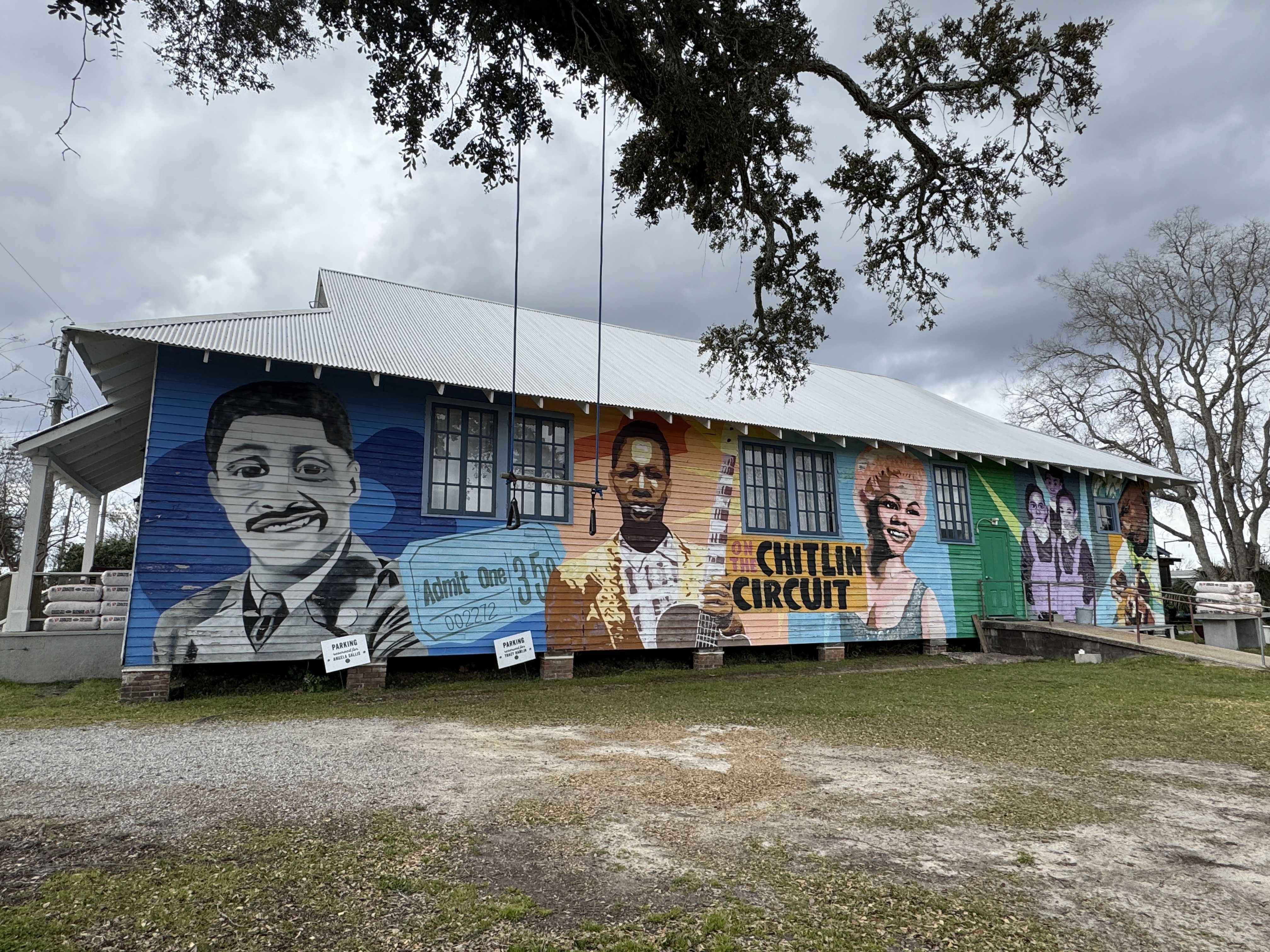 Built in 1922 by the One Hundred Members’ Debating Benevolent Association, the 100 Men D.B.A. Hall is said to be “one of the rare surviving landmarks on the Mississippi Blues Trail and a testament to the deep musical roots that emerged amid a history of racial oppression.” It served as a hub for African American social life and entertainment, hosting many performances that shaped American music, including blues, rhythm & blues and jazz greats like Ray Charles, James Brown, Etta James, Guitar Slim, Deacon John and Earl King.
Built in 1922 by the One Hundred Members’ Debating Benevolent Association, the 100 Men D.B.A. Hall is said to be “one of the rare surviving landmarks on the Mississippi Blues Trail and a testament to the deep musical roots that emerged amid a history of racial oppression.” It served as a hub for African American social life and entertainment, hosting many performances that shaped American music, including blues, rhythm & blues and jazz greats like Ray Charles, James Brown, Etta James, Guitar Slim, Deacon John and Earl King.
The hall’s use as an entertainment venue was a way for the 100 Men DBA to generate the money they needed to help members of the community. Today, the place is still a venue to enjoy music and a variety of special events and workshops.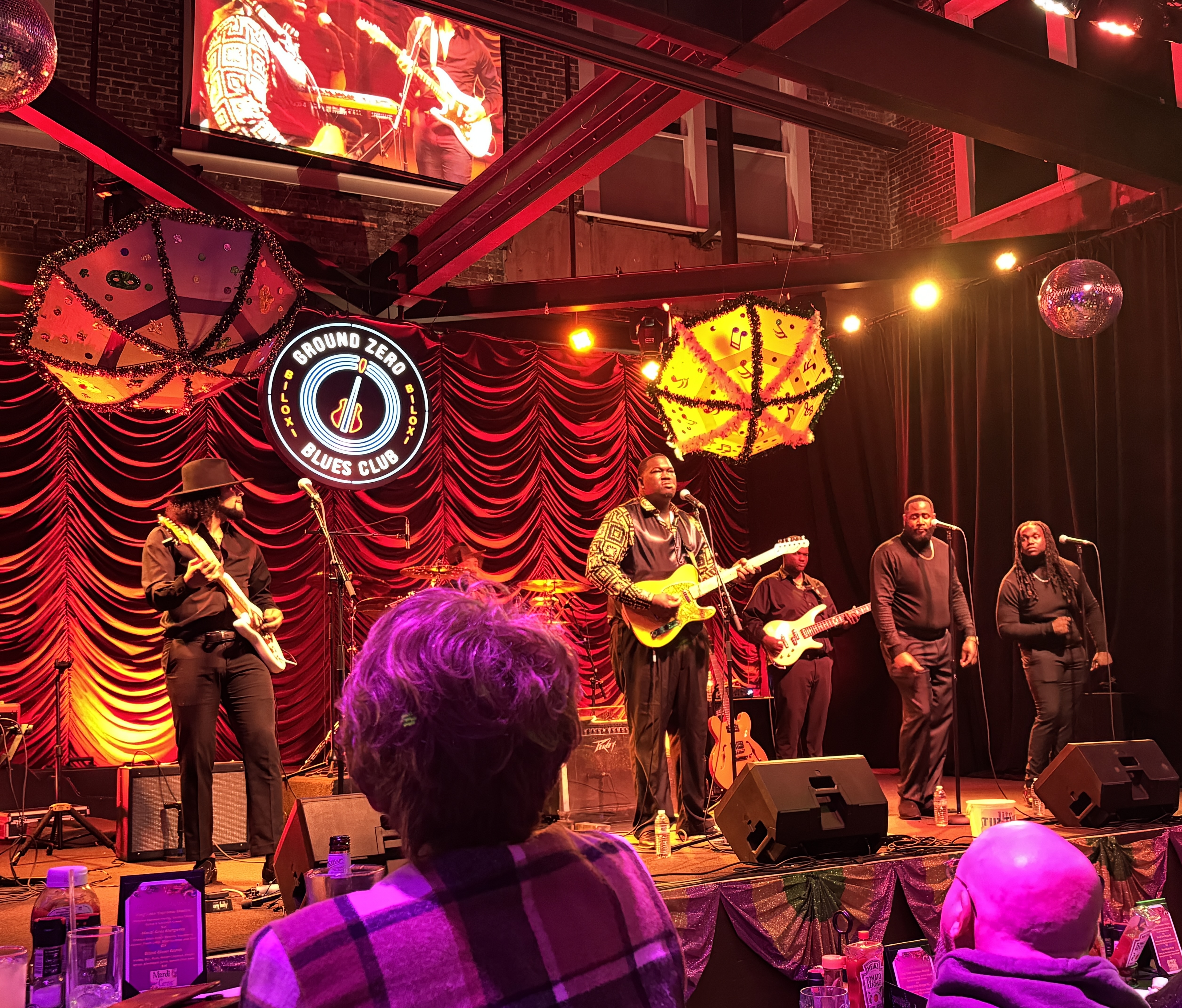 If you’re into the blues, book seats at Ground Zero Blues Club Biloxi to experience a live show. And even if this kind of music’s not your thing, I still recommend catching a performance at this popular, intimate venue. After all, you’re in Mississippi, home of the blues.
If you’re into the blues, book seats at Ground Zero Blues Club Biloxi to experience a live show. And even if this kind of music’s not your thing, I still recommend catching a performance at this popular, intimate venue. After all, you’re in Mississippi, home of the blues.
On tap for the night I booked was Ra’Shad The Blues Kid, a 2025 International Blues Challenge 2nd Place Winner. Not having heard of this performer, I wasn’t sure what to expect. But he did not disappoint!. I was immediately hooked on Ra’Shad’s soulful and funky sounds and his music vibrated through my body. He and his talented band really got the crowd going and it was a fun evening.
When it comes to food, know that dining options in Coastal Mississippi are aplenty. This area is known for its abundant variety of seafood – everything from oysters and crab to shrimp and snapper, prepared anyway you desire. Down here, the flavors of the sea are celebrated in all their glory. And as a pescatarian, I was in heaven!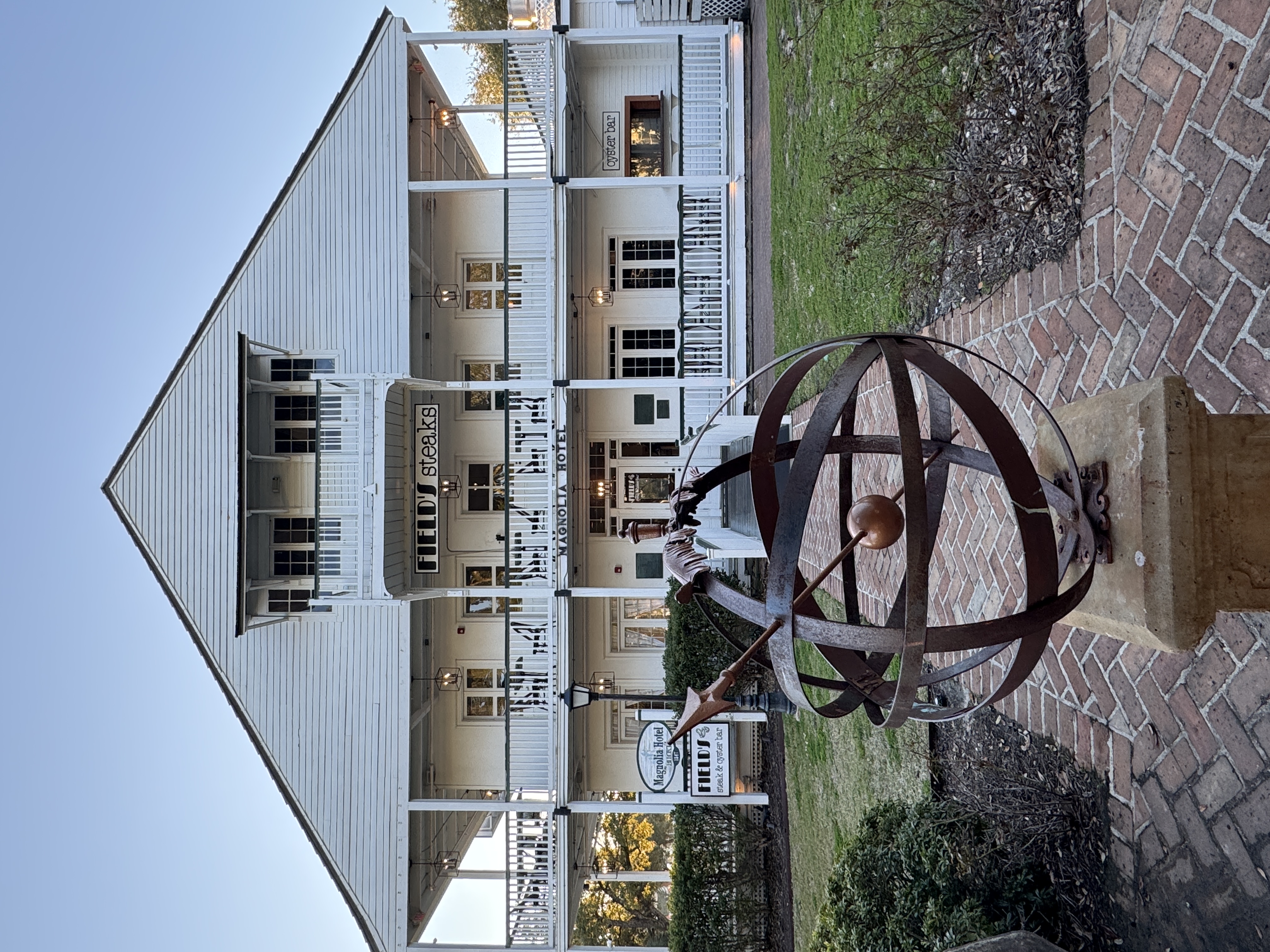 I had many delicious and memorable dinners, specifically at Field’s Steak & Oyster Bar, Catch 110, Siren Social Club and Mary Mahoney’s Old French House. Field’s inhabits a beautiful historic building, circa 1847. It has been lovingly restored and to keep the history alive, the owners incorporated original signage and named some cocktail and menu items with a nod to Biloxi’s colorful past.
I had many delicious and memorable dinners, specifically at Field’s Steak & Oyster Bar, Catch 110, Siren Social Club and Mary Mahoney’s Old French House. Field’s inhabits a beautiful historic building, circa 1847. It has been lovingly restored and to keep the history alive, the owners incorporated original signage and named some cocktail and menu items with a nod to Biloxi’s colorful past.
This upscale restaurant has become famous over the years for its Method Steaks and is also the only establishment in south Mississippi to cook its oysters chargrilled separately in respect of the traditional recipes.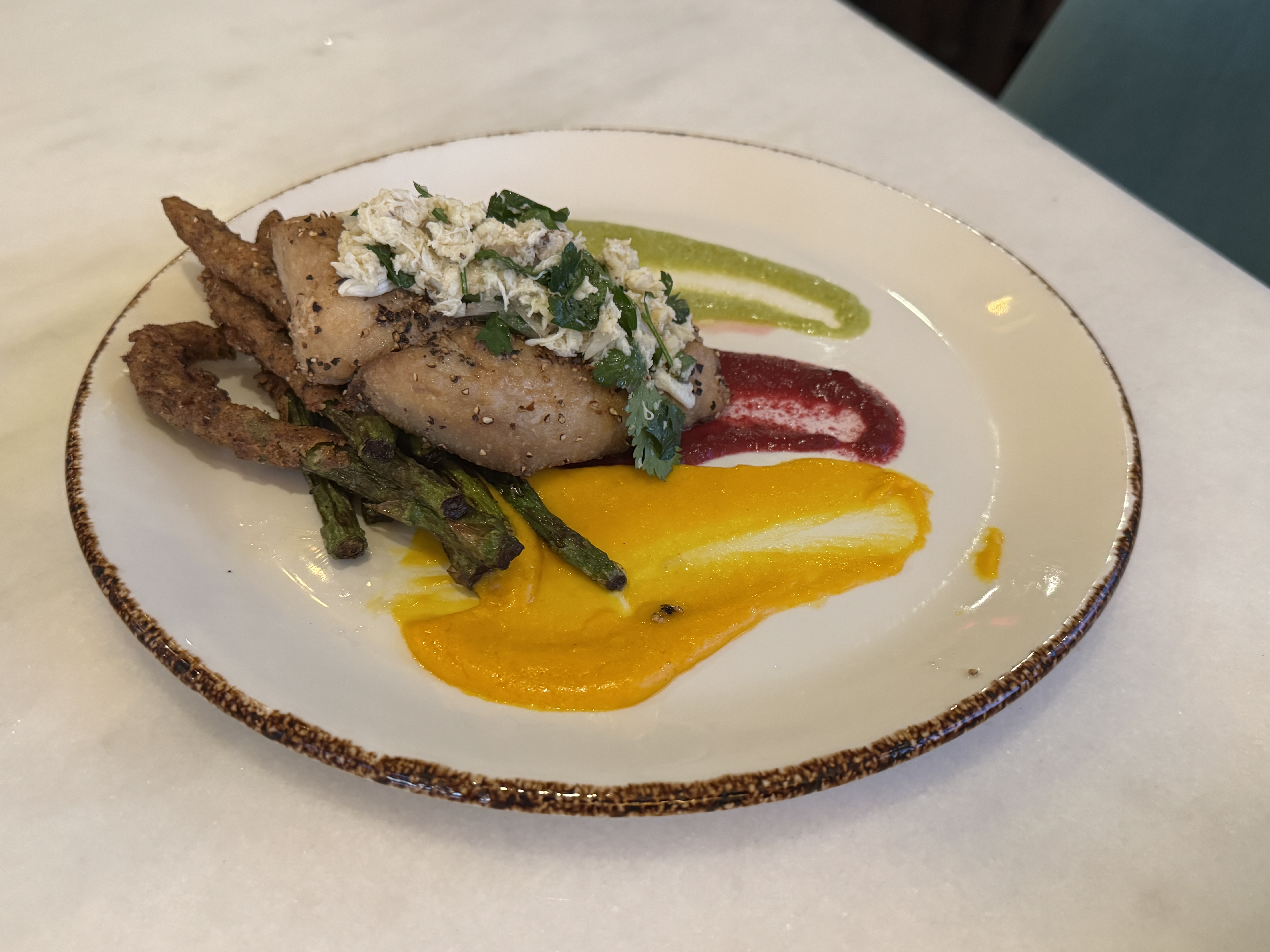 Pescatarians will love the assortment of items available from a whole speckled trout and crab and shrimp ravioli to ahi tuna steak and crab stuffed shrimp. And of course there are oysters galore served in different styles. Carnivores will also be in good hands, as there are steaks of a variety of cuts with an assortment of toppings.
Pescatarians will love the assortment of items available from a whole speckled trout and crab and shrimp ravioli to ahi tuna steak and crab stuffed shrimp. And of course there are oysters galore served in different styles. Carnivores will also be in good hands, as there are steaks of a variety of cuts with an assortment of toppings. Catch 110, also in Biloxi, has a reputation for celebrating the Gulf Coast’s rich culinary heritage. Dishes combine the freshest ingredients with innovative and vibrant flavors. The menu is extensive with plenty of choices for everyone, whether you like seafood or meat. Start with the clam chowder or some piña colada coconut shrimp. Then take your pick from champagne beurre blanc scallops and lobster linguini to the fresh catch of the day topped with crab au gratin, and so much more. All meals end with a poof of sweet, pink cotton candy.
Catch 110, also in Biloxi, has a reputation for celebrating the Gulf Coast’s rich culinary heritage. Dishes combine the freshest ingredients with innovative and vibrant flavors. The menu is extensive with plenty of choices for everyone, whether you like seafood or meat. Start with the clam chowder or some piña colada coconut shrimp. Then take your pick from champagne beurre blanc scallops and lobster linguini to the fresh catch of the day topped with crab au gratin, and so much more. All meals end with a poof of sweet, pink cotton candy.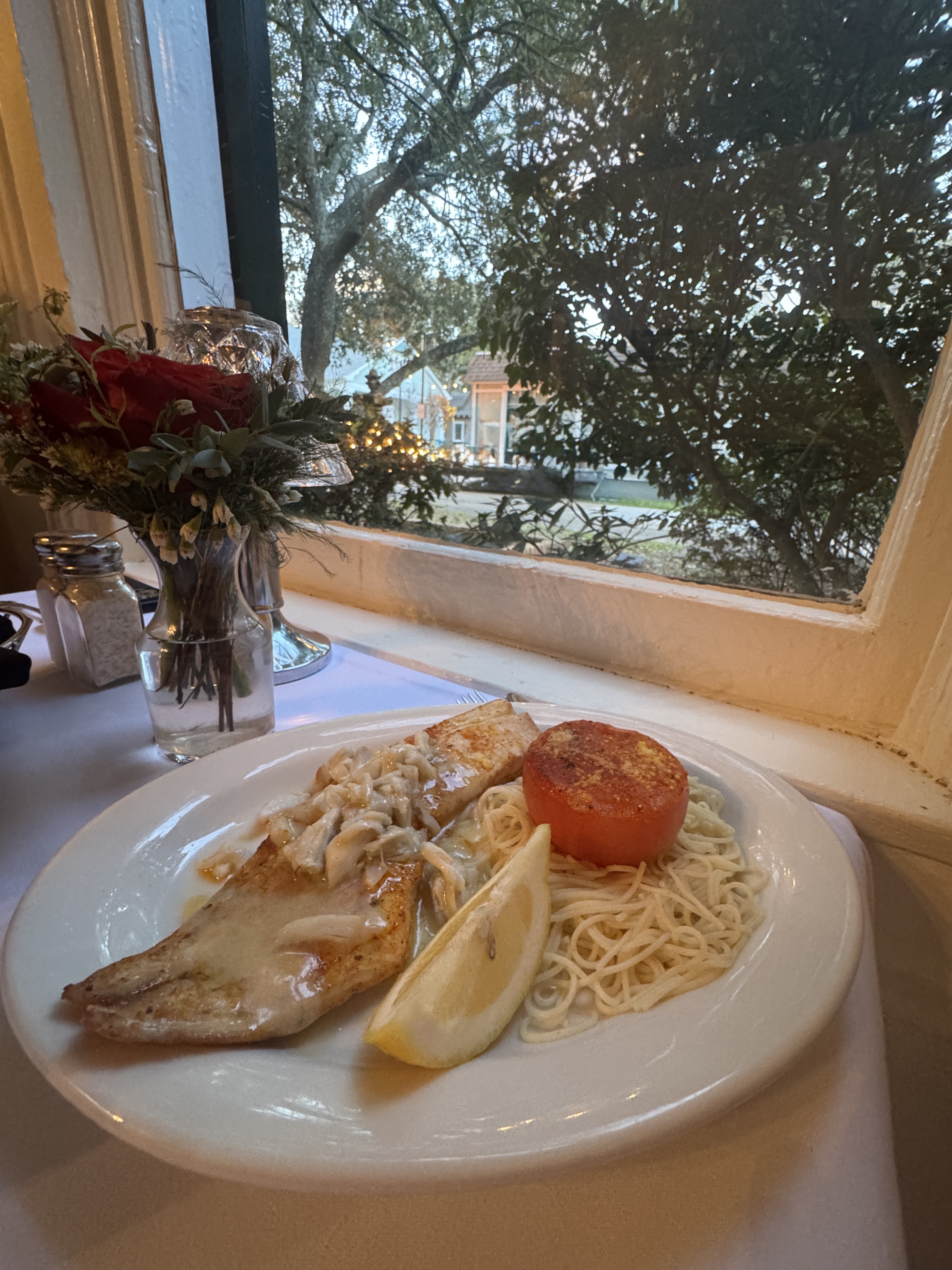 Mary Mahoney’s Old French House is one of the grand dames when it comes to establishments in Biloxi. You’ll enjoy an upscale and elegant meal in one of the oldest homes in the country, where presidents, celebrities, dignitaries and millions of others have dined. As you enter the lovely New Orleans style courtyard, take note of Patriarch, the giant live oak tree that’s over 2,000 years old. It’s so ginormous that its roots pop out of the restaurant’s cellar floor.
Mary Mahoney’s Old French House is one of the grand dames when it comes to establishments in Biloxi. You’ll enjoy an upscale and elegant meal in one of the oldest homes in the country, where presidents, celebrities, dignitaries and millions of others have dined. As you enter the lovely New Orleans style courtyard, take note of Patriarch, the giant live oak tree that’s over 2,000 years old. It’s so ginormous that its roots pop out of the restaurant’s cellar floor.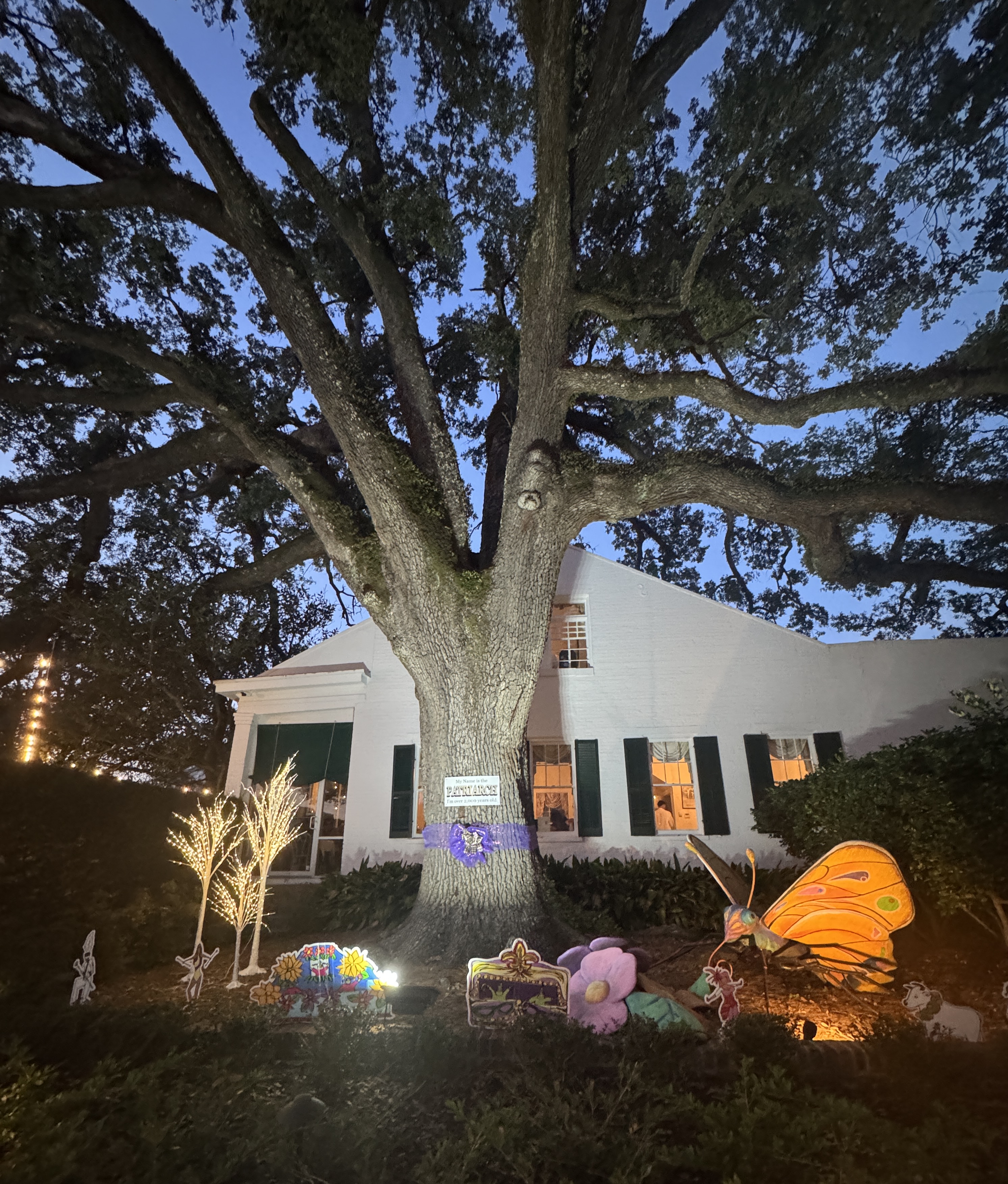 If you like fried green tomatoes, Mary Mahoney’s serves them topped with crabmeat and crawfish. An array of other tasty appetizers include shrimp cocktail, charbroiled oysters, crab cakes and petite fried soft shell crabs, but the “world famous gourmet seafood gumbo” is a must!
If you like fried green tomatoes, Mary Mahoney’s serves them topped with crabmeat and crawfish. An array of other tasty appetizers include shrimp cocktail, charbroiled oysters, crab cakes and petite fried soft shell crabs, but the “world famous gourmet seafood gumbo” is a must!
Entrees are equally as mouthwatering with fish of the day topped with lump crabmeat, whole broiled flounder, surf ‘n’ turf, shrimp stuffed with crabmeat and more. It’s hard to choose, so pick a few items to share with your party.
Siren Social Club is a new tropical speakeasy-style restaurant and bar in Gulfport, offering European cuisine and hand-crafted cocktails. You’ll find an extensive raw bar, a variety of handmade pastas, caviar service and a number of delectable small plates. The food is excellent, as is the service, and the atmosphere is hip and happening.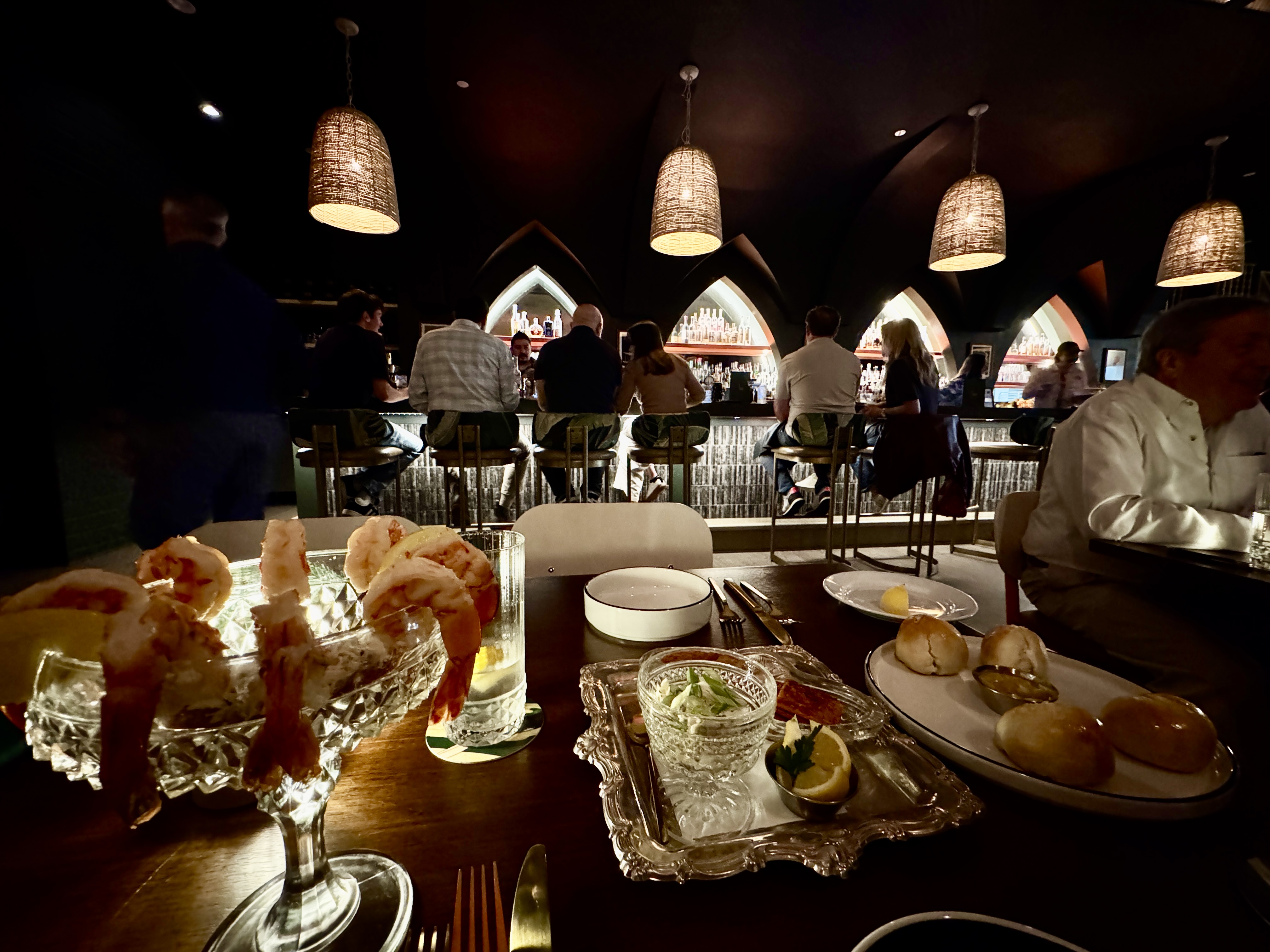 My husband and I split the shrimp cocktail, which boasted eight jumbo size babies, a flavorful crab ravigote dip with buttered crackers, the Cacio e Pepe squid ink pasta and an incredible creamed spinach. What also took top billing was the melt-in-your-mouth yeast rolls, accompanied by a honey satsuma butter.
My husband and I split the shrimp cocktail, which boasted eight jumbo size babies, a flavorful crab ravigote dip with buttered crackers, the Cacio e Pepe squid ink pasta and an incredible creamed spinach. What also took top billing was the melt-in-your-mouth yeast rolls, accompanied by a honey satsuma butter.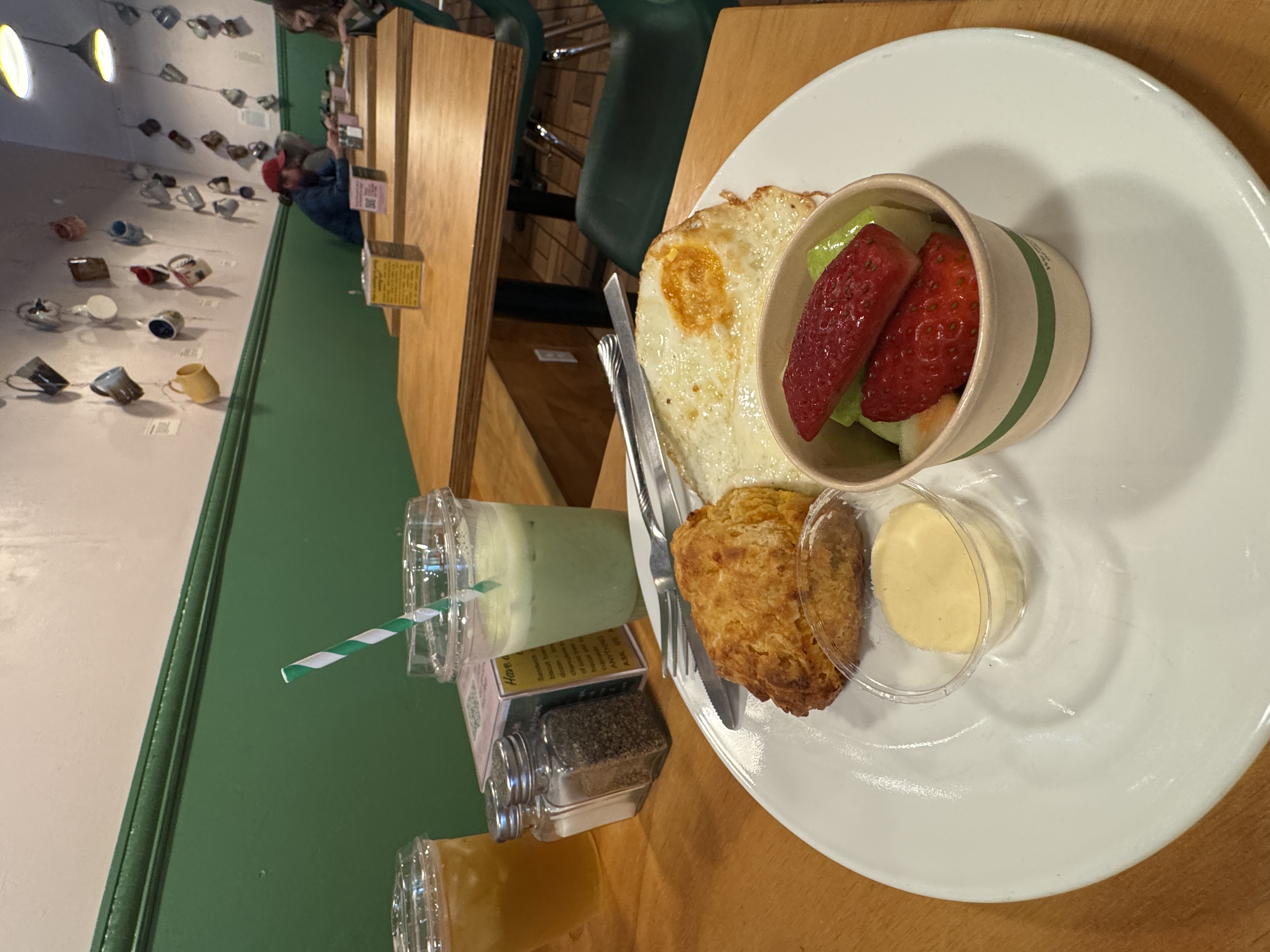 For lunch, try the French-inspired BrewPaddle Café in Biloxi (the tartines are delish) or the Mockingbird Café in Bay St. Louis. And you can’t beat breakfast at Greenhouse Biloxi. The biscuits are swoon-worthy!
For lunch, try the French-inspired BrewPaddle Café in Biloxi (the tartines are delish) or the Mockingbird Café in Bay St. Louis. And you can’t beat breakfast at Greenhouse Biloxi. The biscuits are swoon-worthy!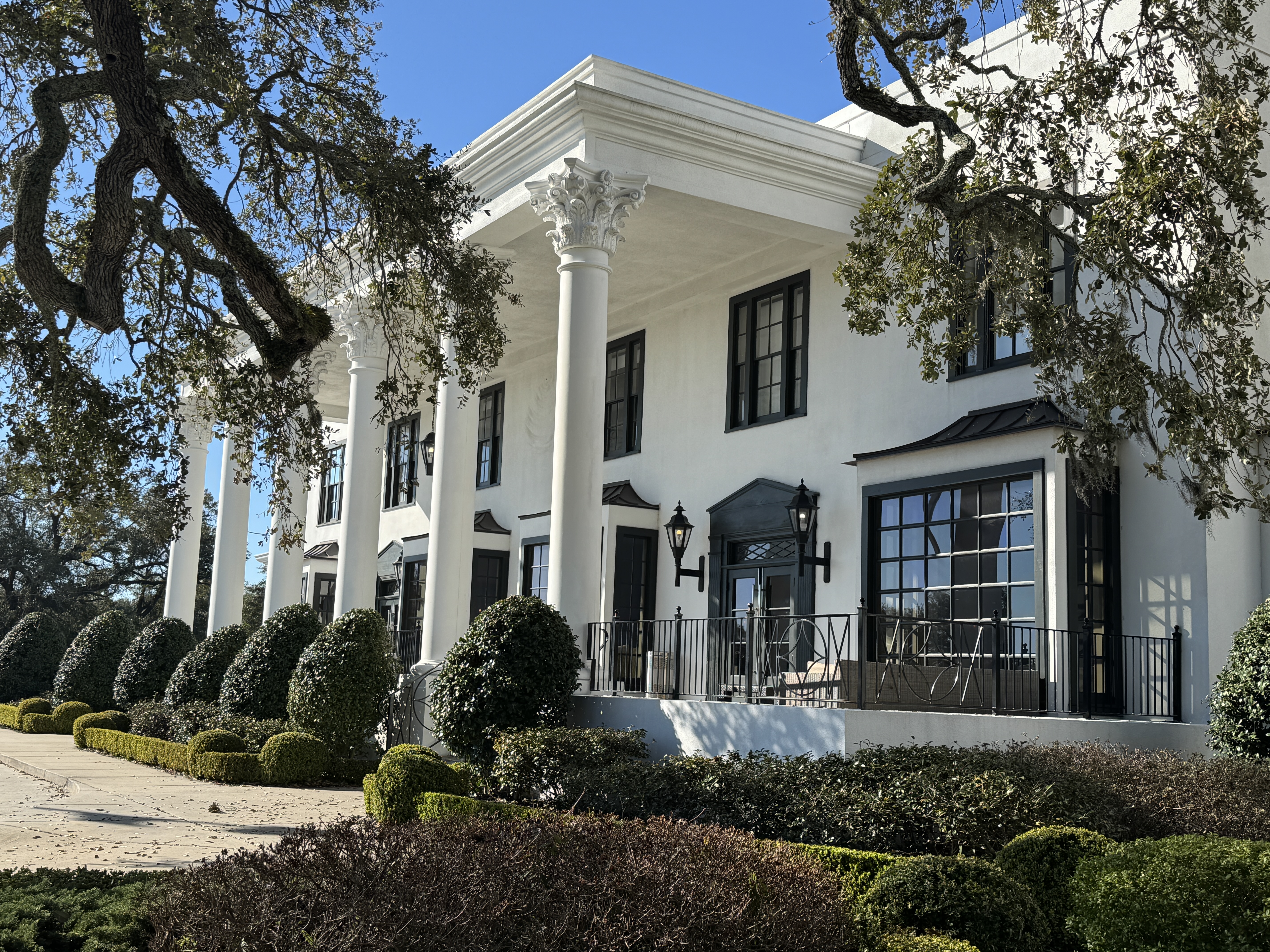 During my trip, I stayed at The White House Hotel, an historic, 76-room, boutique property in the heart of Biloxi, overlooking the scenic Mississippi Sound. The location is prime, as it offers convenient access to top attractions in each of the three cities, making it the ideal home base.
During my trip, I stayed at The White House Hotel, an historic, 76-room, boutique property in the heart of Biloxi, overlooking the scenic Mississippi Sound. The location is prime, as it offers convenient access to top attractions in each of the three cities, making it the ideal home base.
This elegantly restored hotel boasts a colorful past and oozes Southern charm from its elegant décor to its welcoming staff. Majestic, venerable oak trees and a lovely veranda complete the scene. As I looked out over the property, I could feel the spirits of debutantes around me and picture Scarlett O’Hara traipsing down the stairs.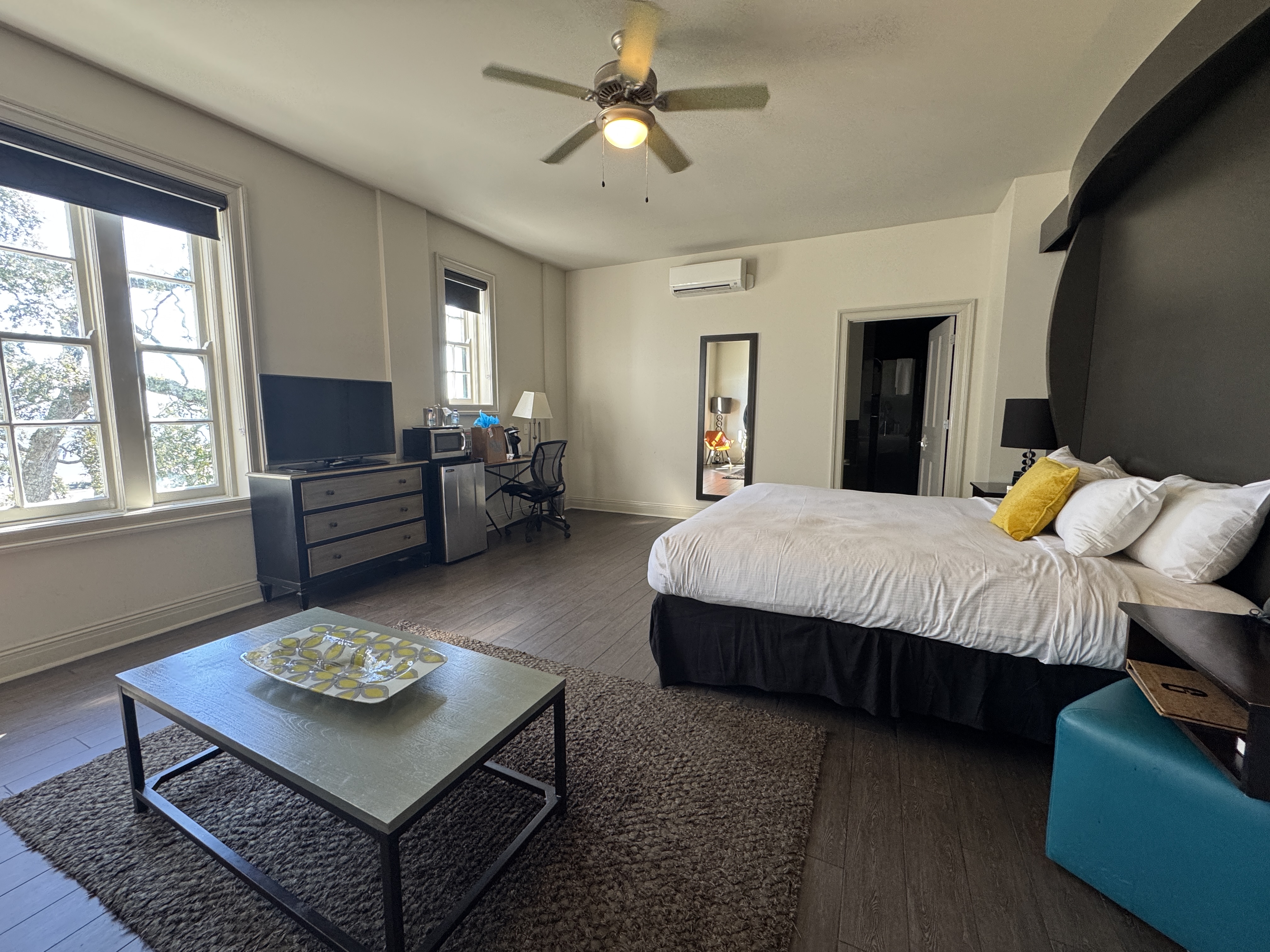 Rooms are well-appointed with heavenly bedding and upscale amenities. Some offer great beach and water views. There’s a pool, restaurant (currently being renovated) and bar, ample event space and much more. And all your needs will be tended to with 24/7 service. It’s quintessential Southern hospitality at its finest.
Rooms are well-appointed with heavenly bedding and upscale amenities. Some offer great beach and water views. There’s a pool, restaurant (currently being renovated) and bar, ample event space and much more. And all your needs will be tended to with 24/7 service. It’s quintessential Southern hospitality at its finest.
www.coastalmississippi.com
www.whitehousebiloxi.com



Outside the Visitor Center, you’ll have a picturesque view of the Gulf of Mexico and the famed Biloxi Lighthouse, one of the most photographed sites in this region. You can take a guided tour of this 65-foot tall beacon, one of the first cast-iron lighthouses in the South and a symbol of the town’s resilience through its many devastating storms and hurricanes. This landmark, which was built in 1848, has the distinction of being operated by several female lightkeepers, including Maria Younghans, who served in this position for 53 years.

























 If you like fried green tomatoes, Mary Mahoney’s serves them topped with crabmeat and crawfish. An array of other tasty appetizers include shrimp cocktail, charbroiled oysters, crab cakes and petite fried soft shell crabs, but the “world famous gourmet seafood gumbo” is a must!
If you like fried green tomatoes, Mary Mahoney’s serves them topped with crabmeat and crawfish. An array of other tasty appetizers include shrimp cocktail, charbroiled oysters, crab cakes and petite fried soft shell crabs, but the “world famous gourmet seafood gumbo” is a must!








